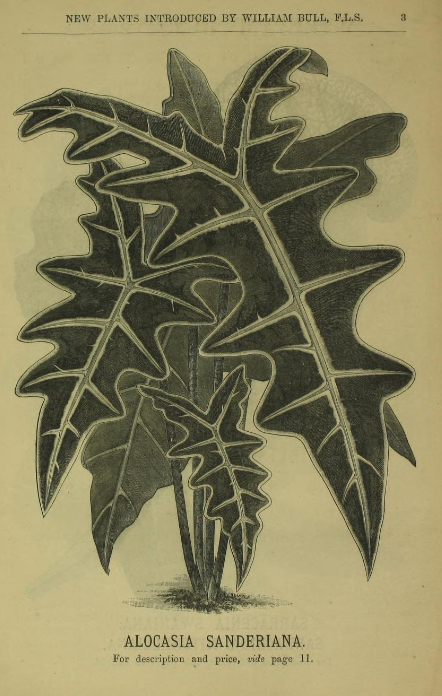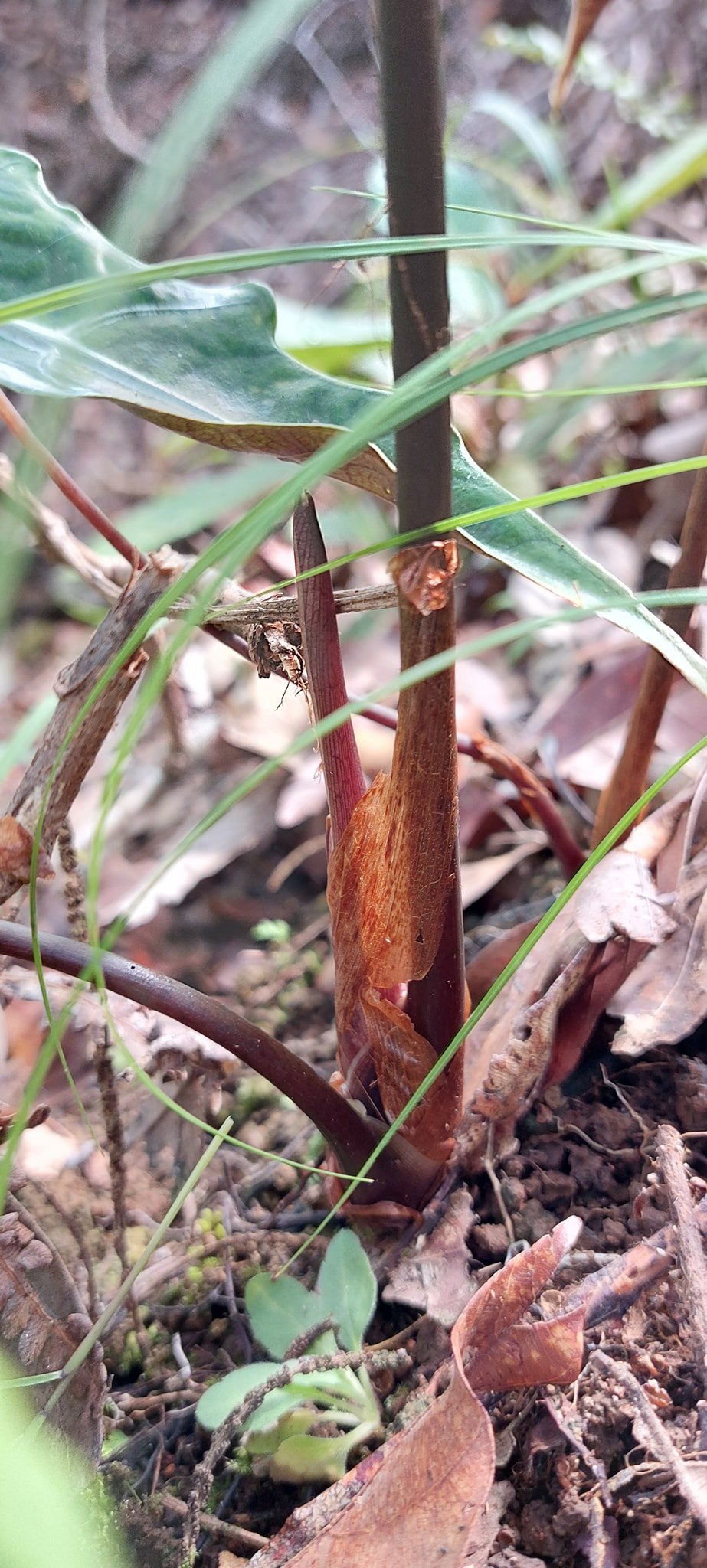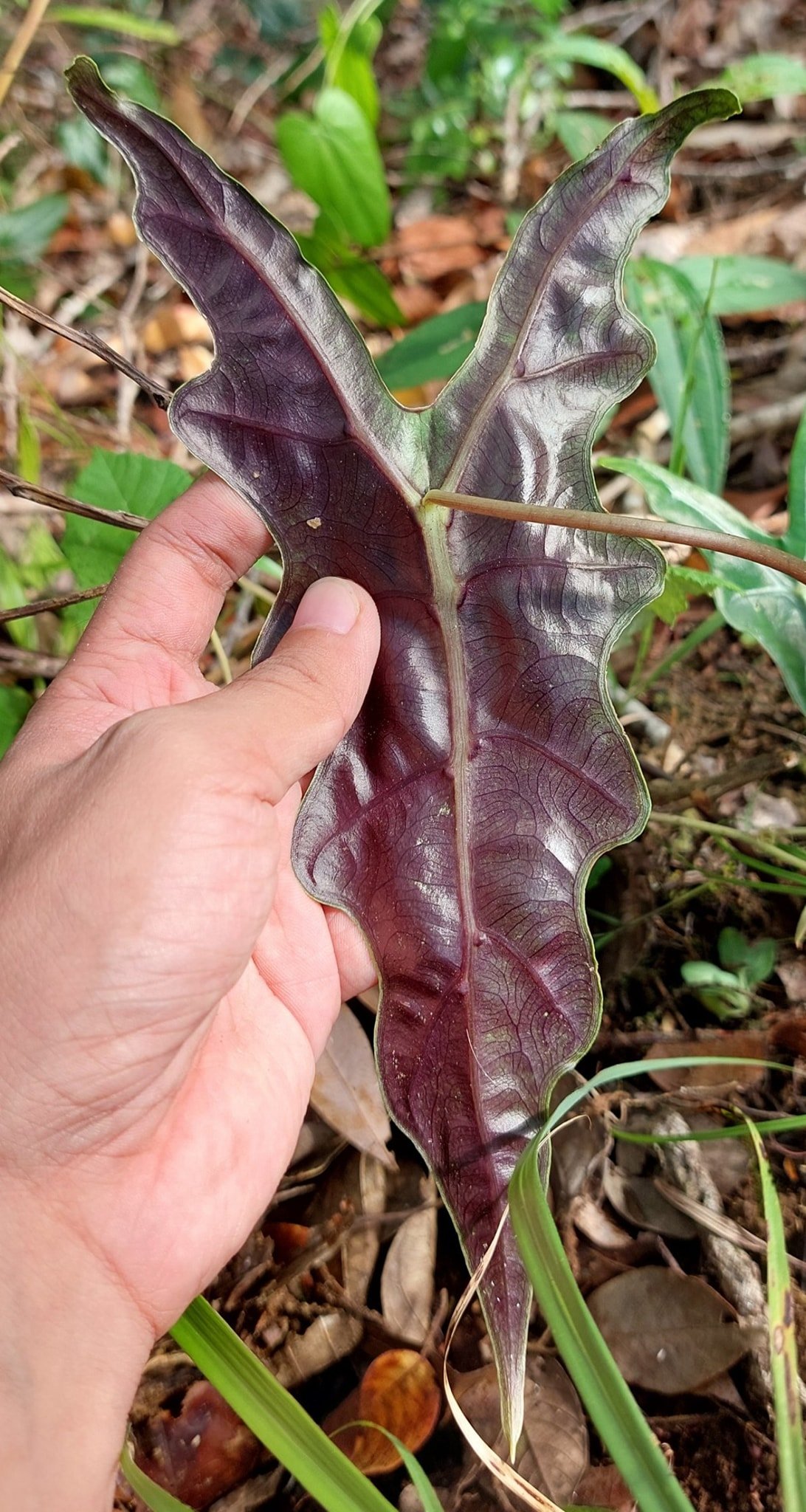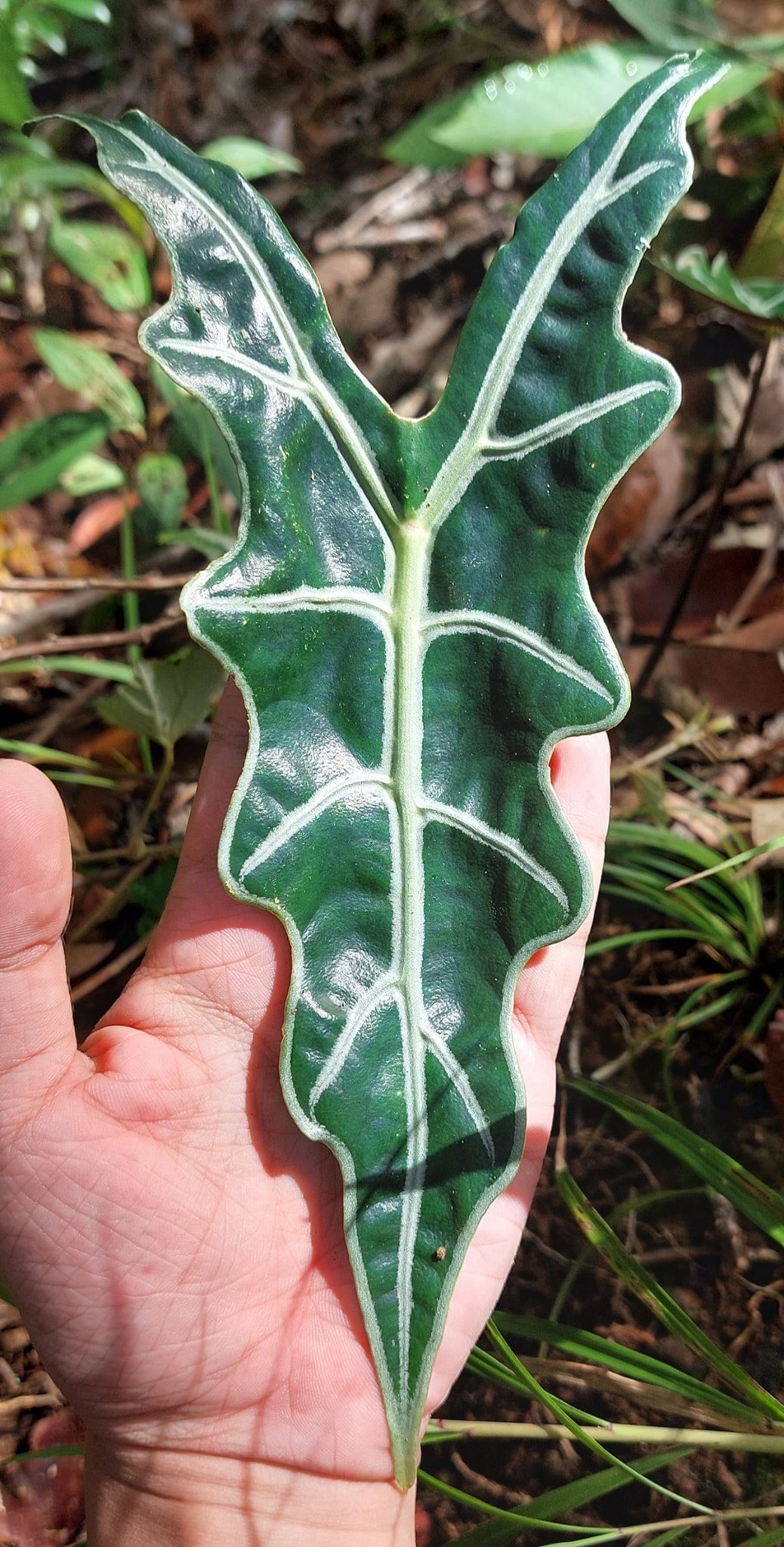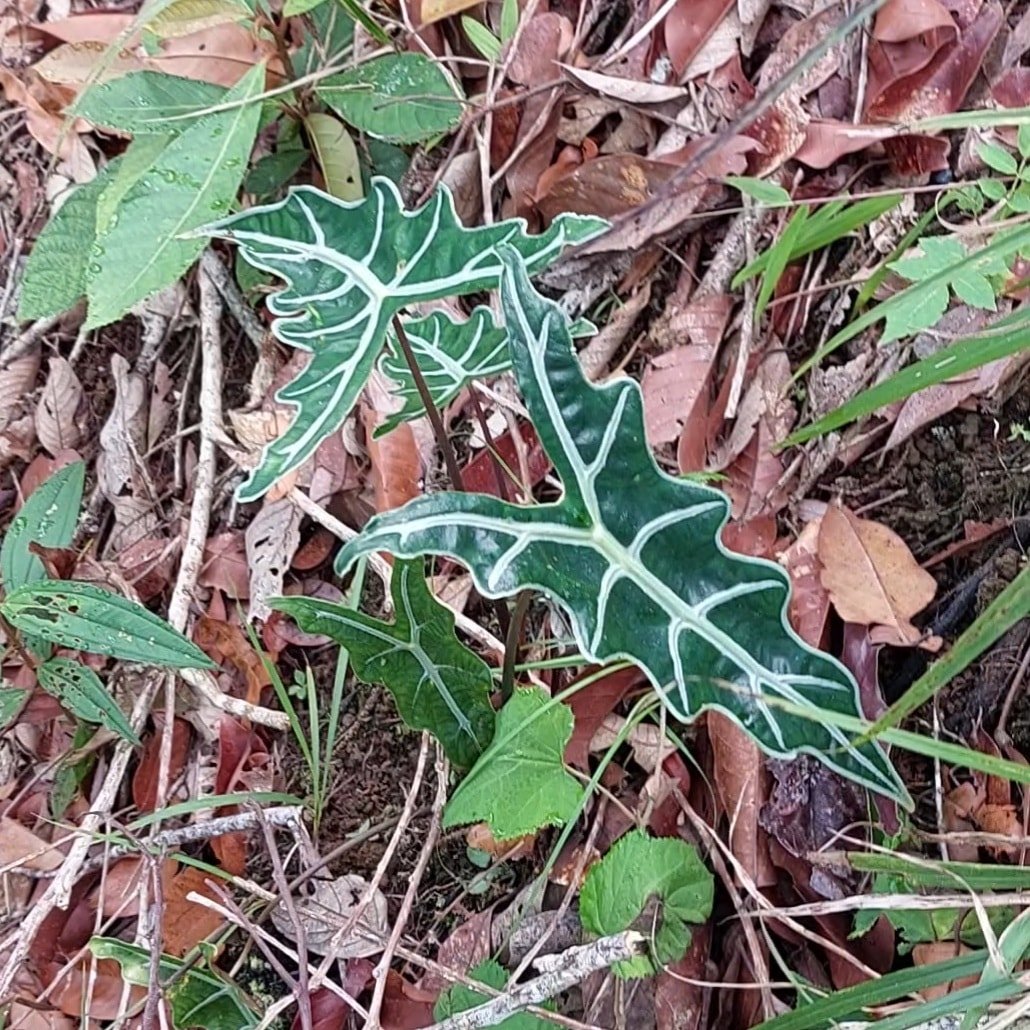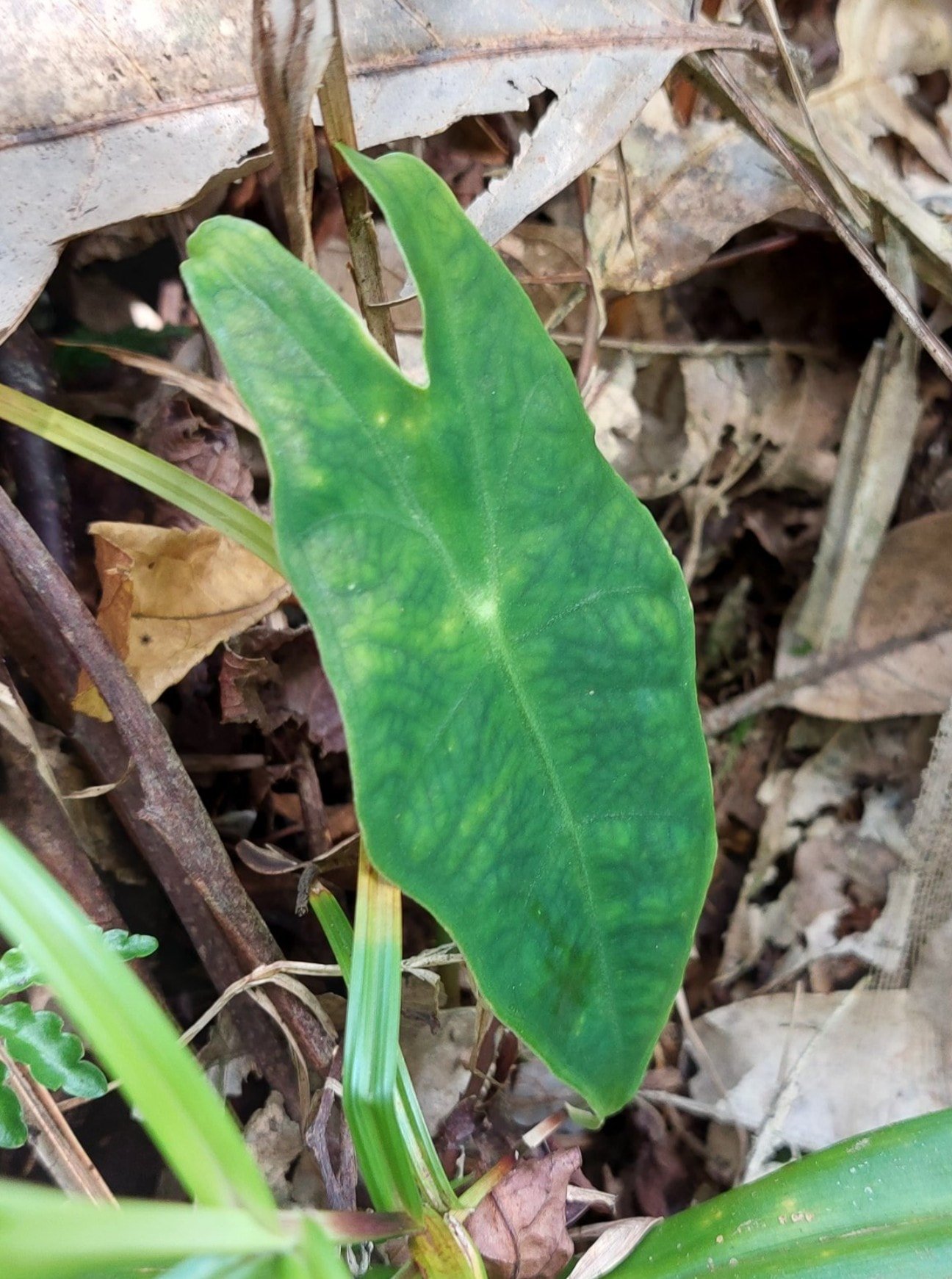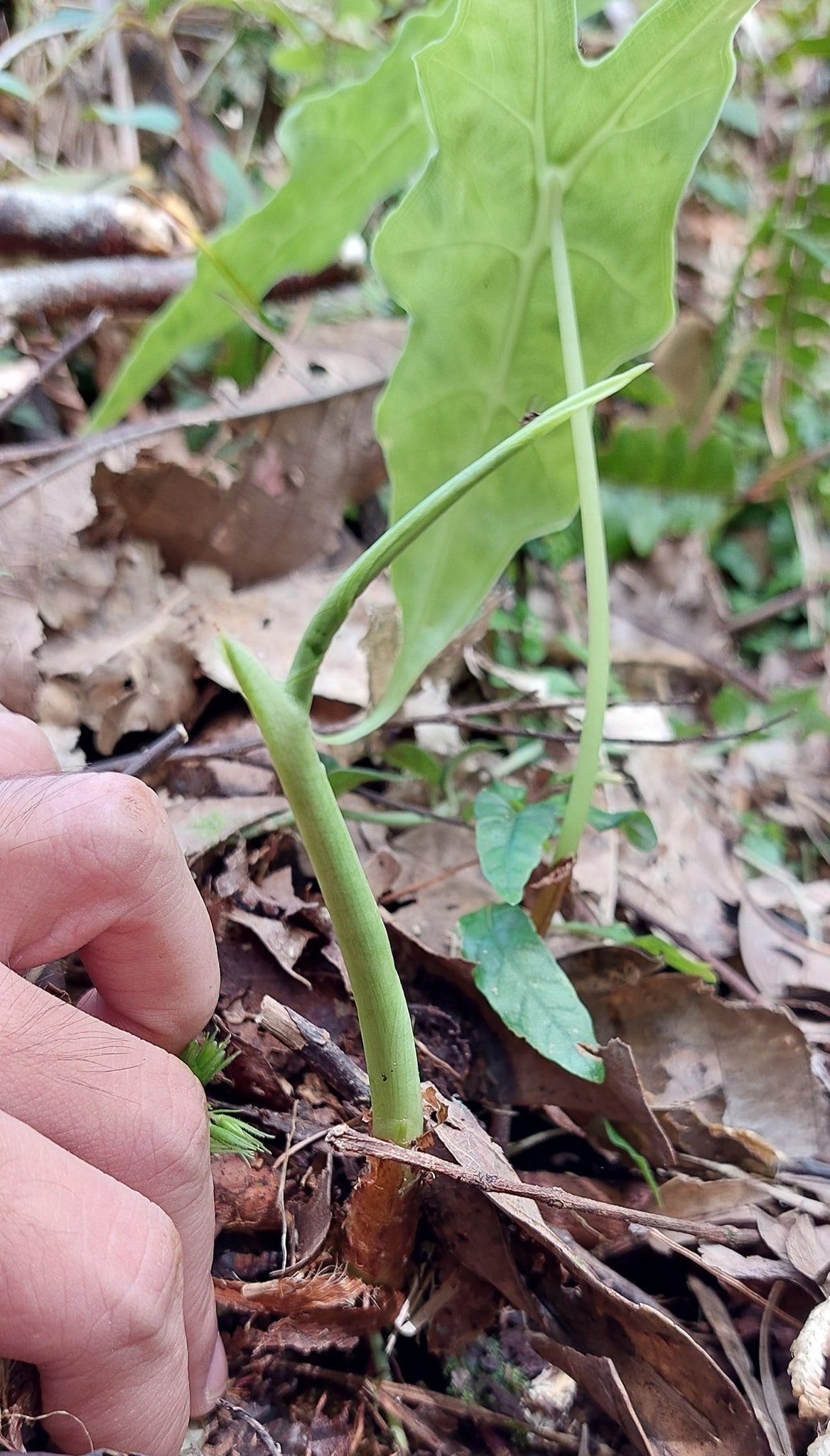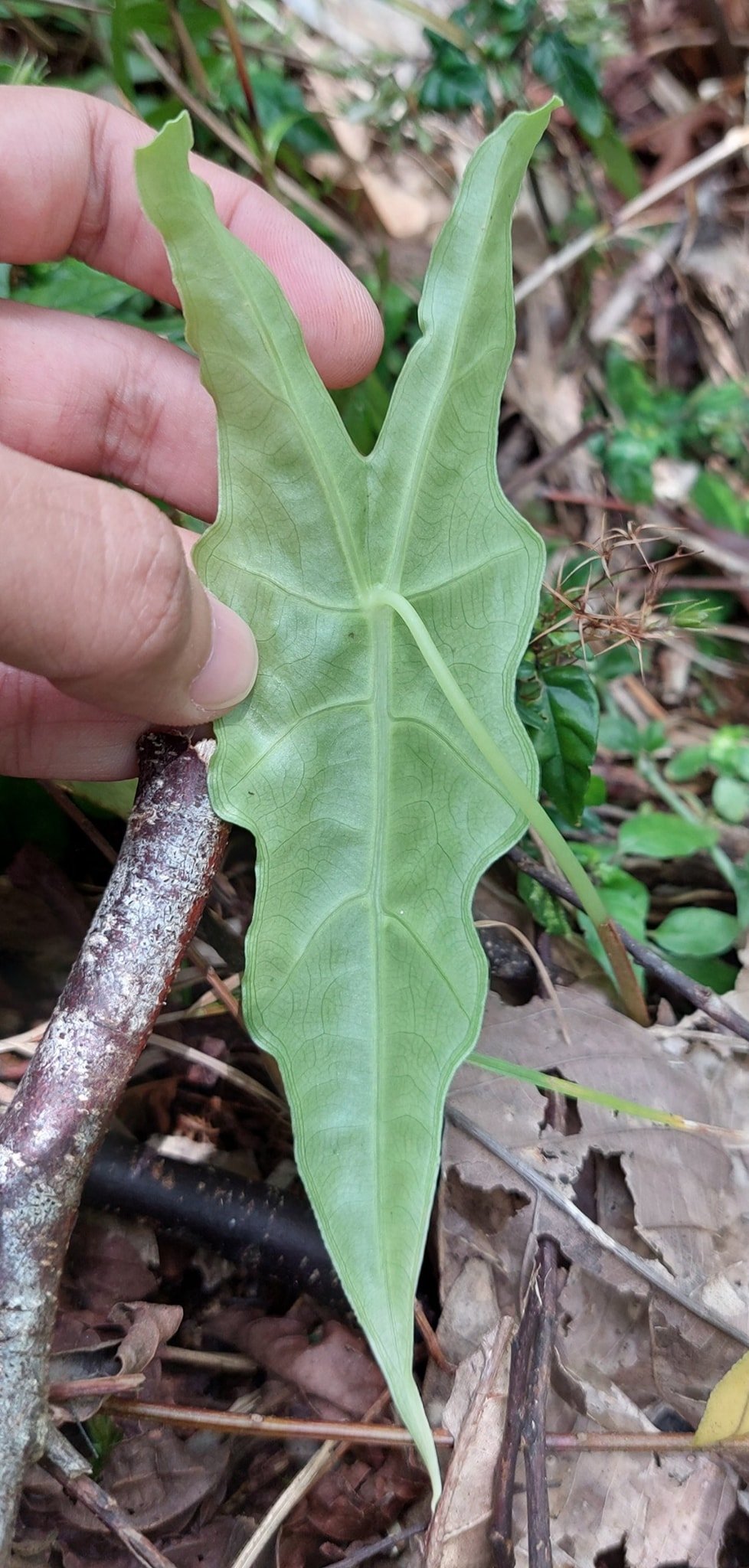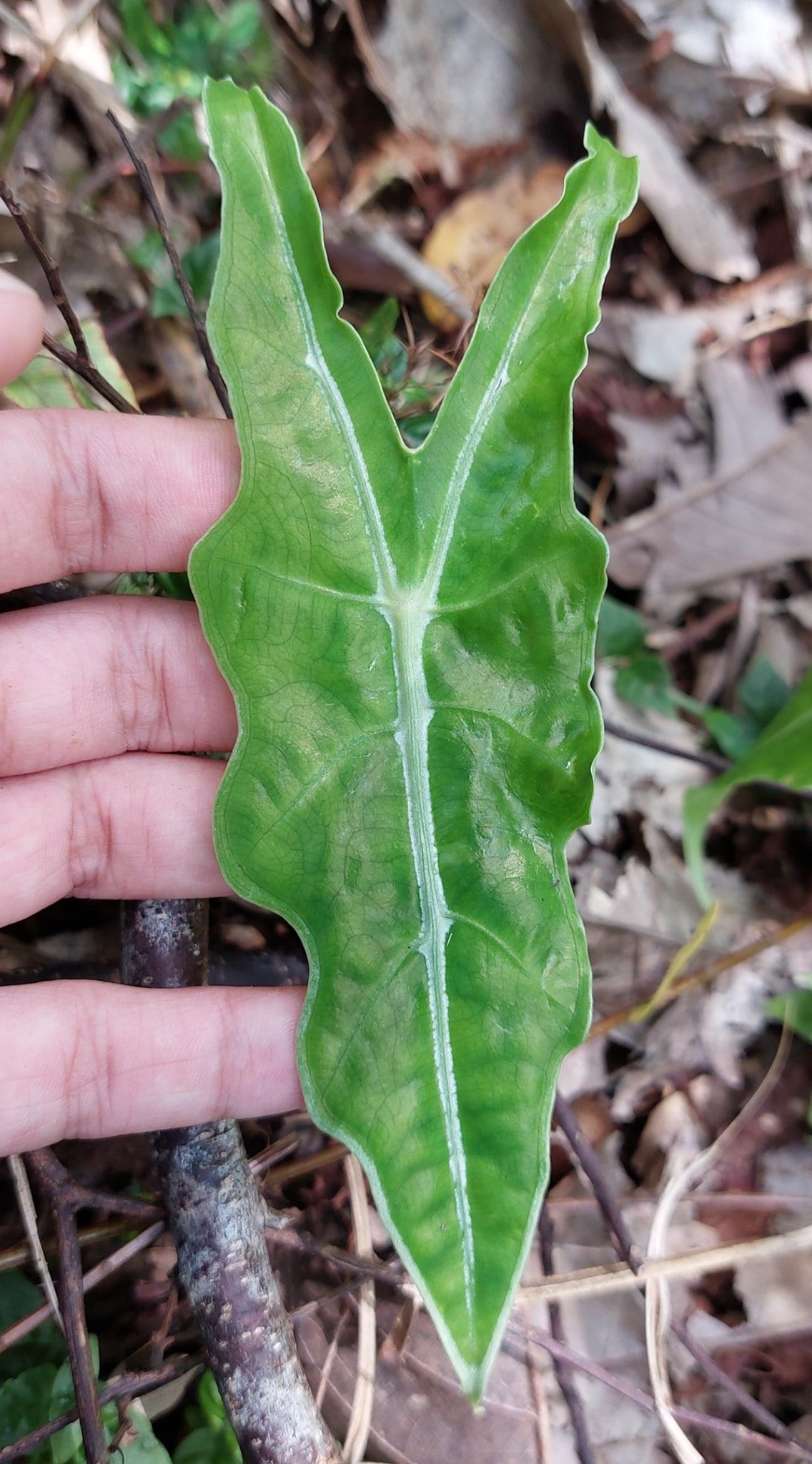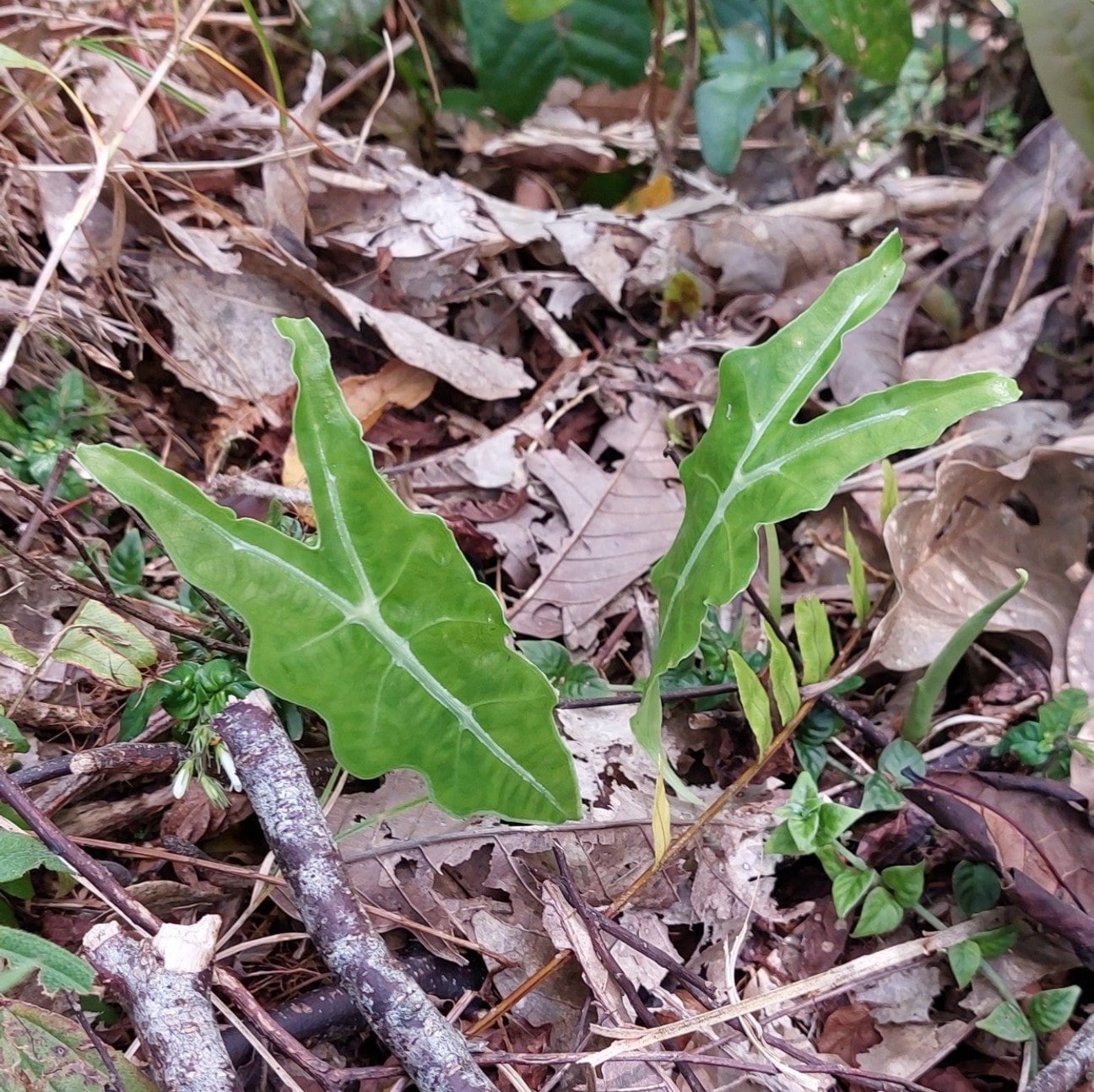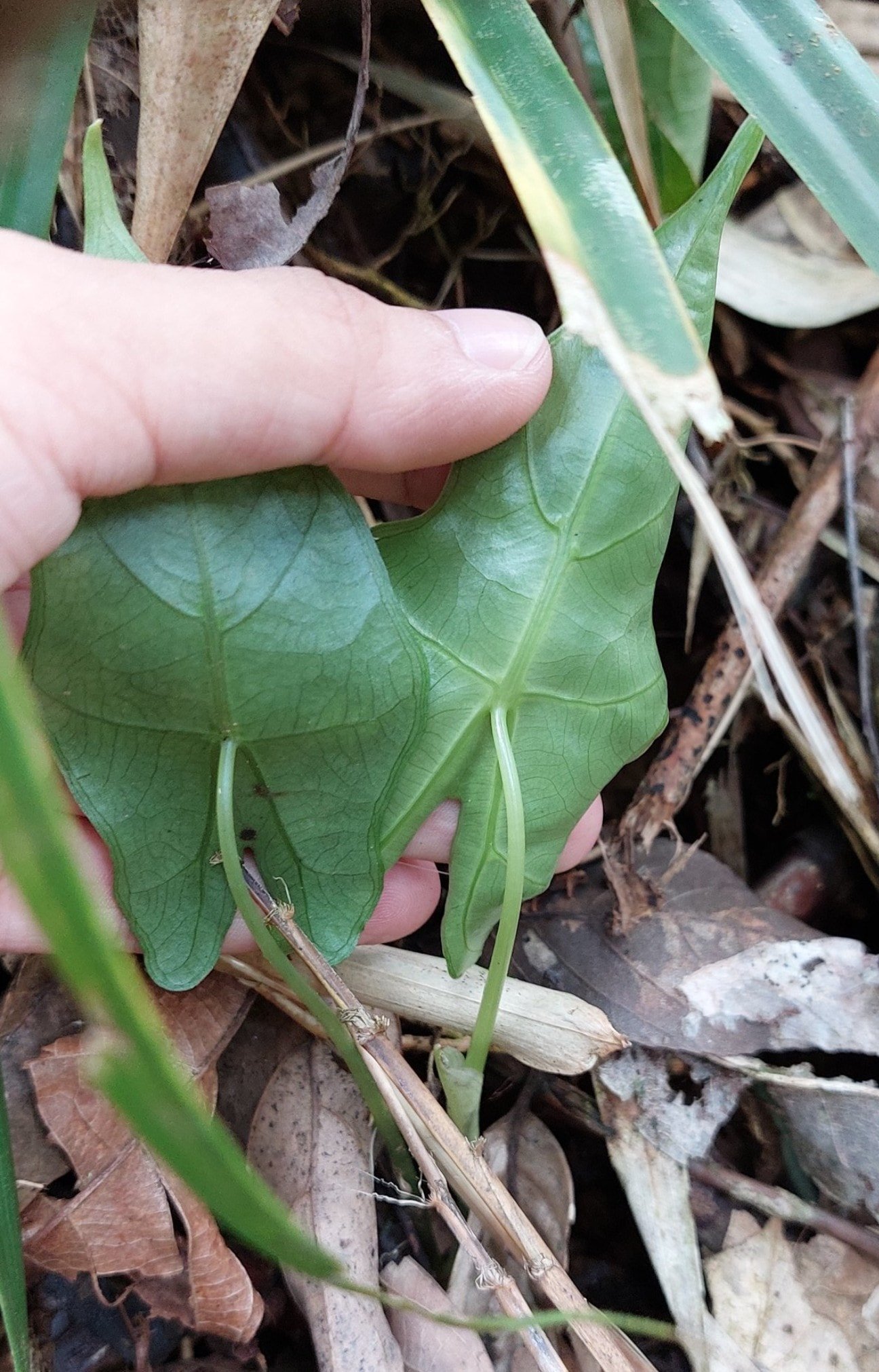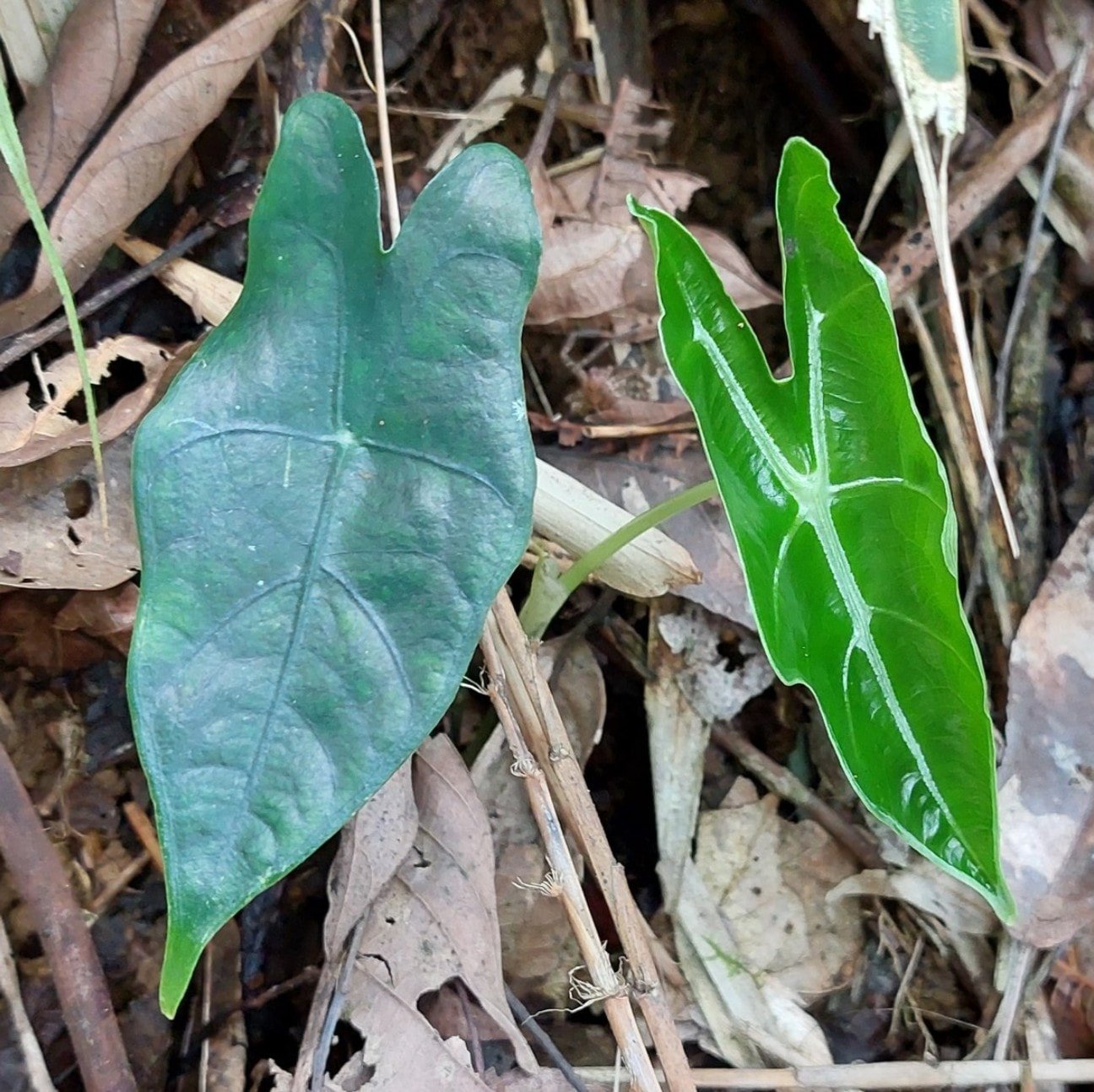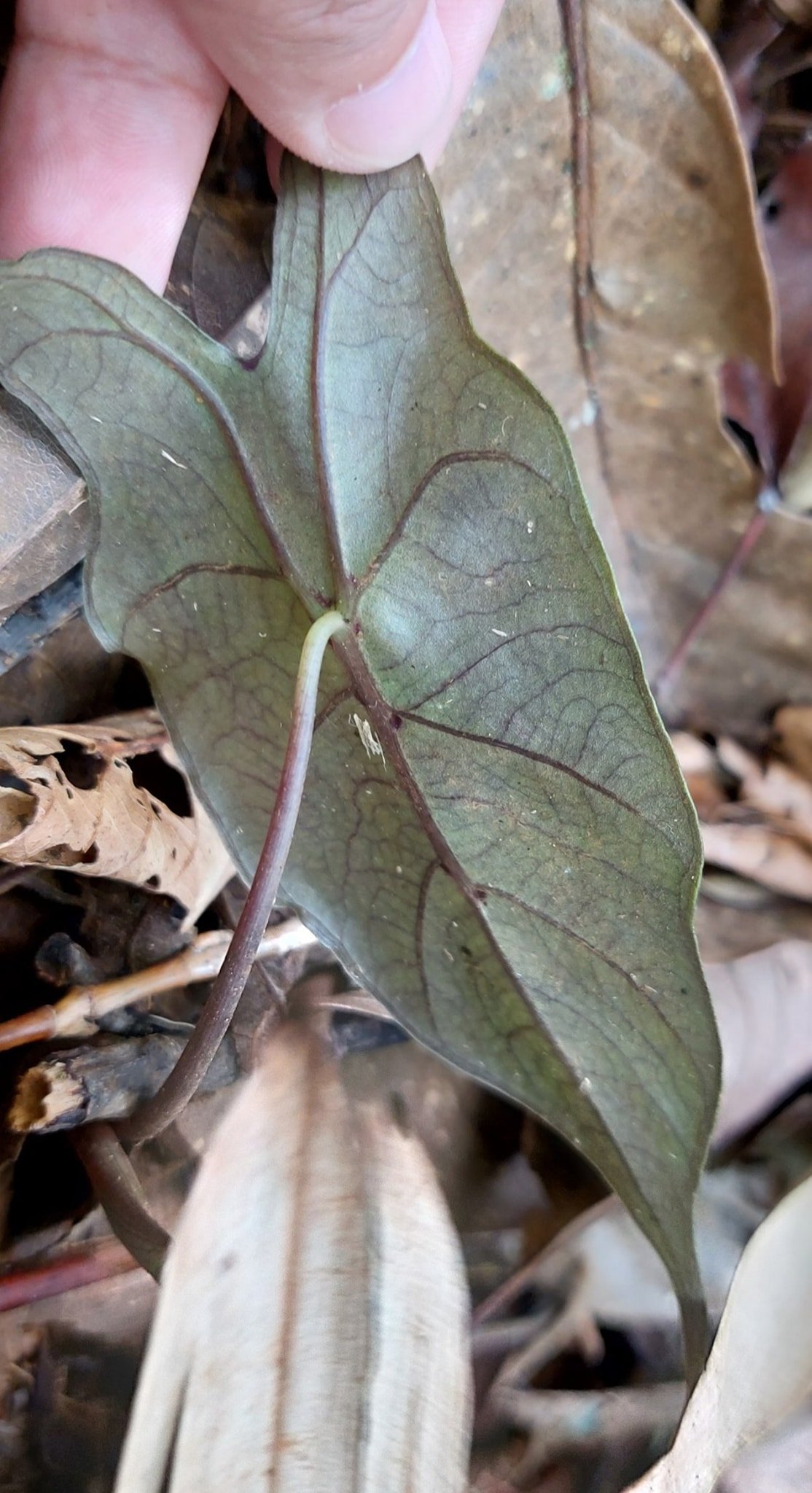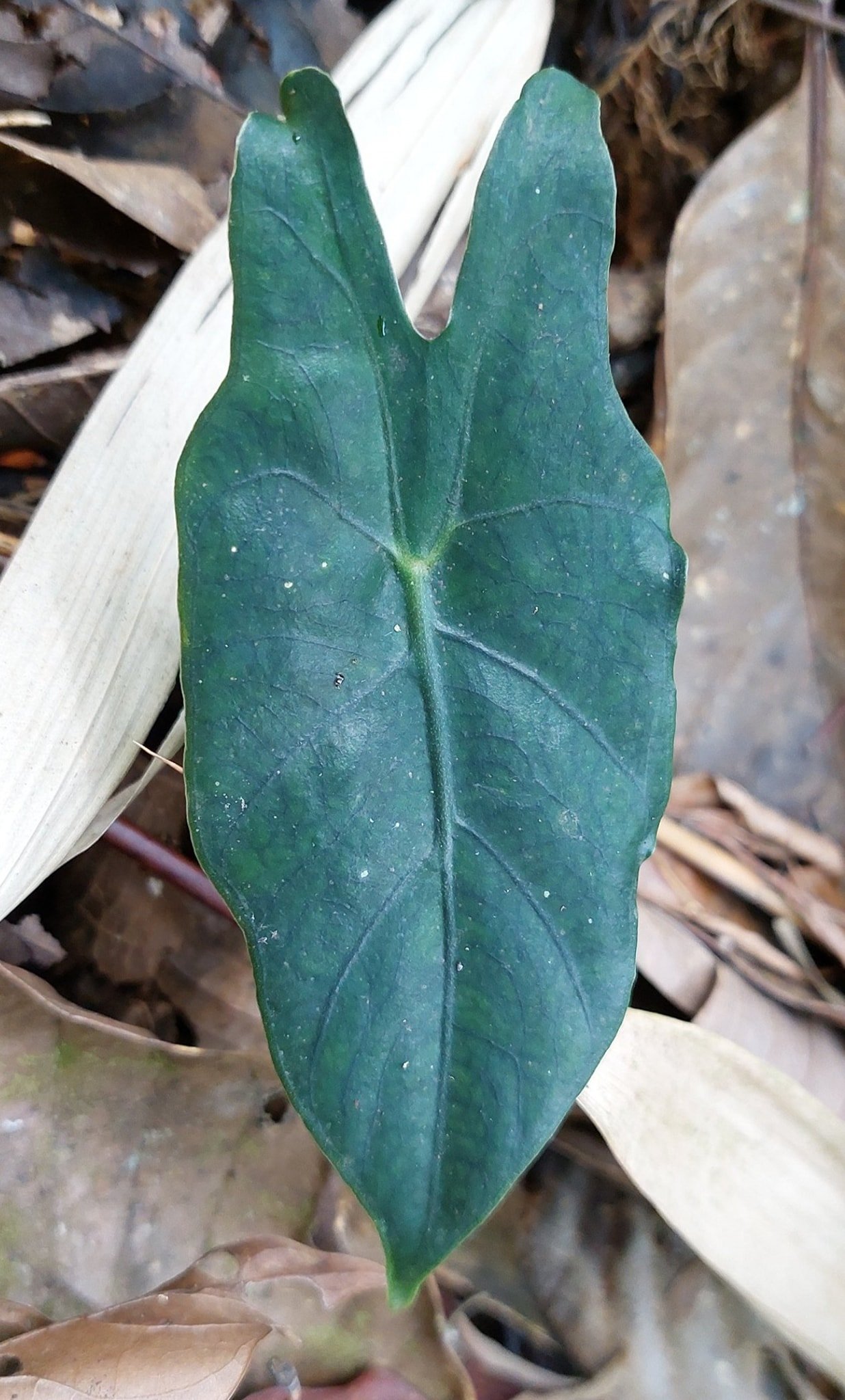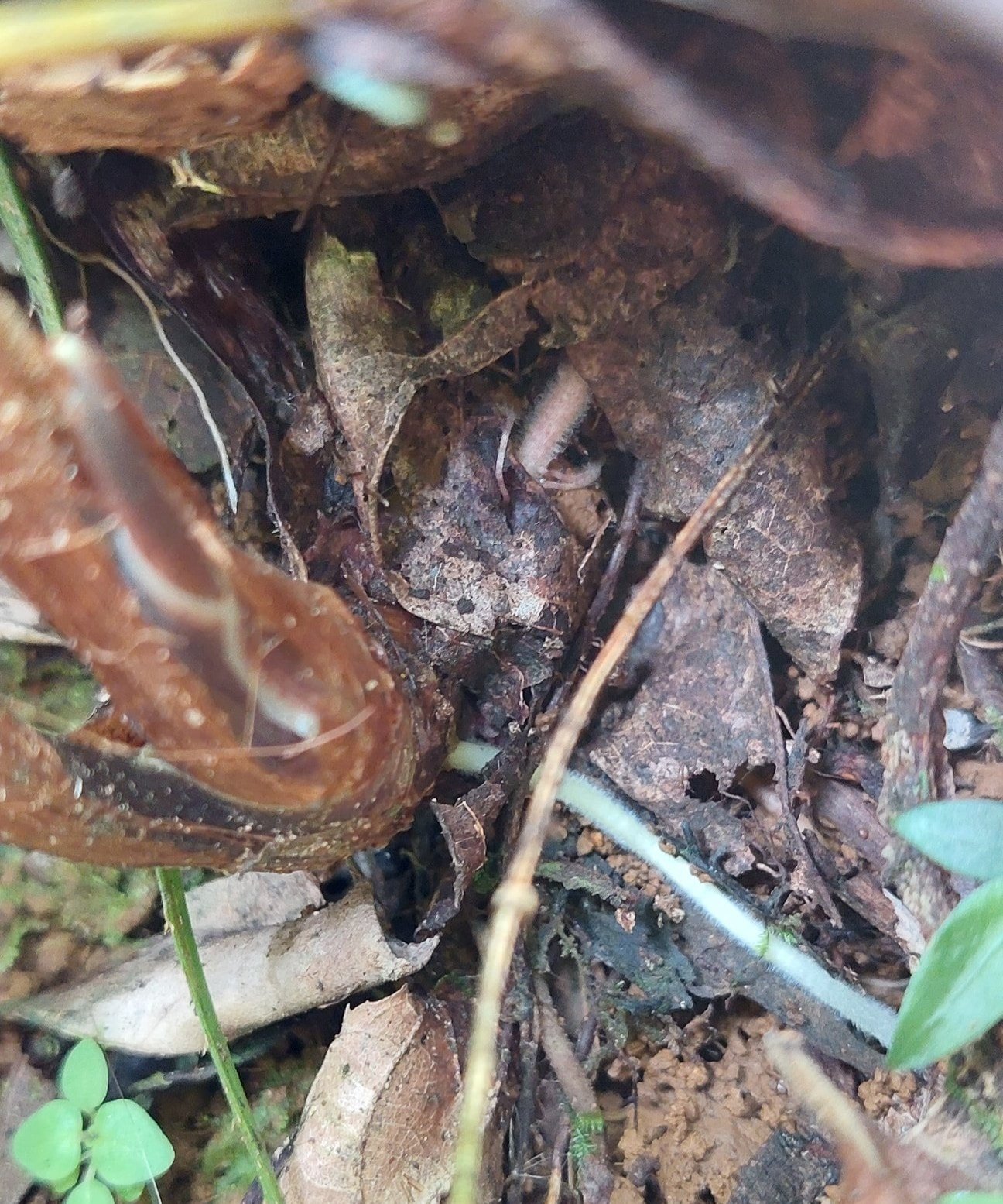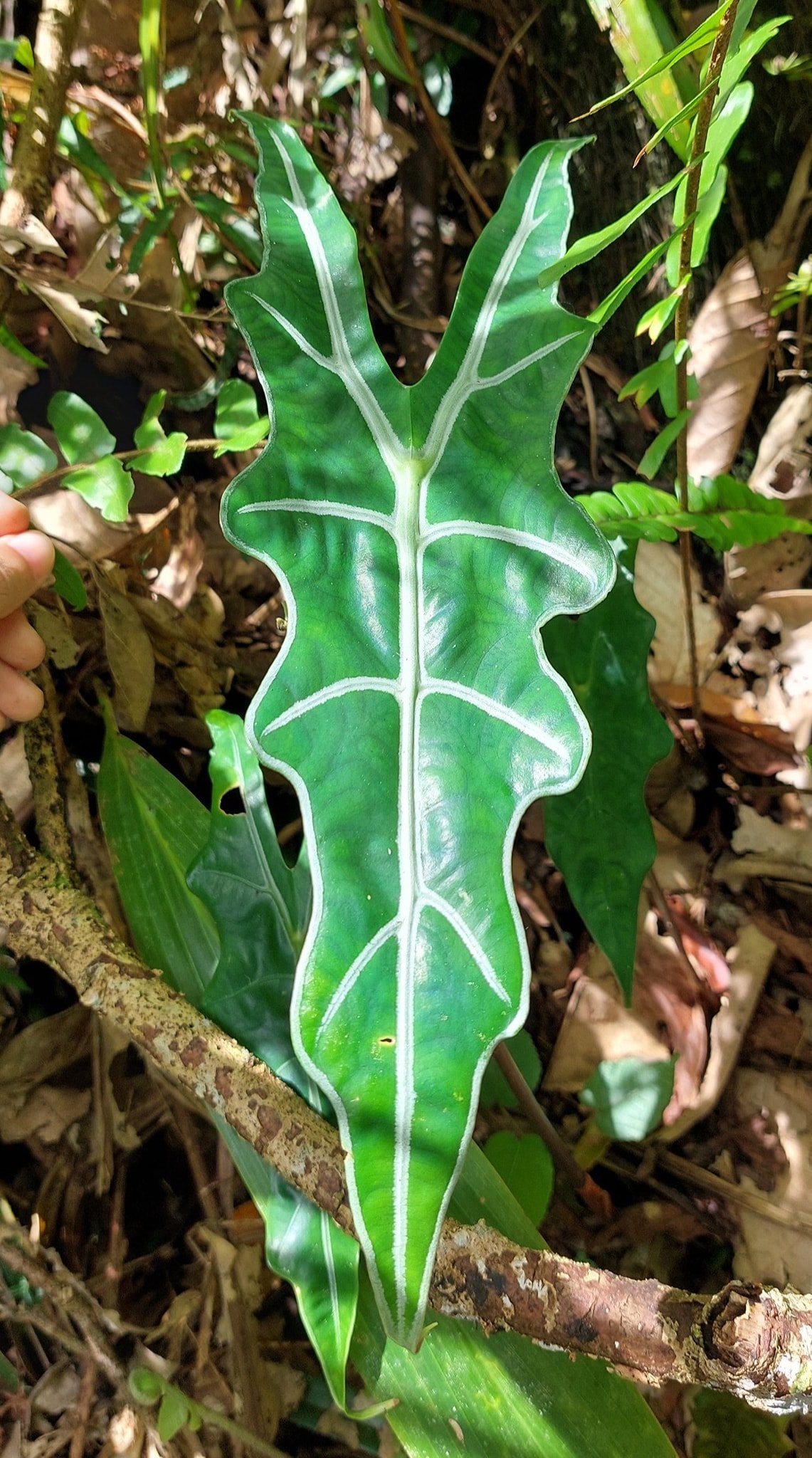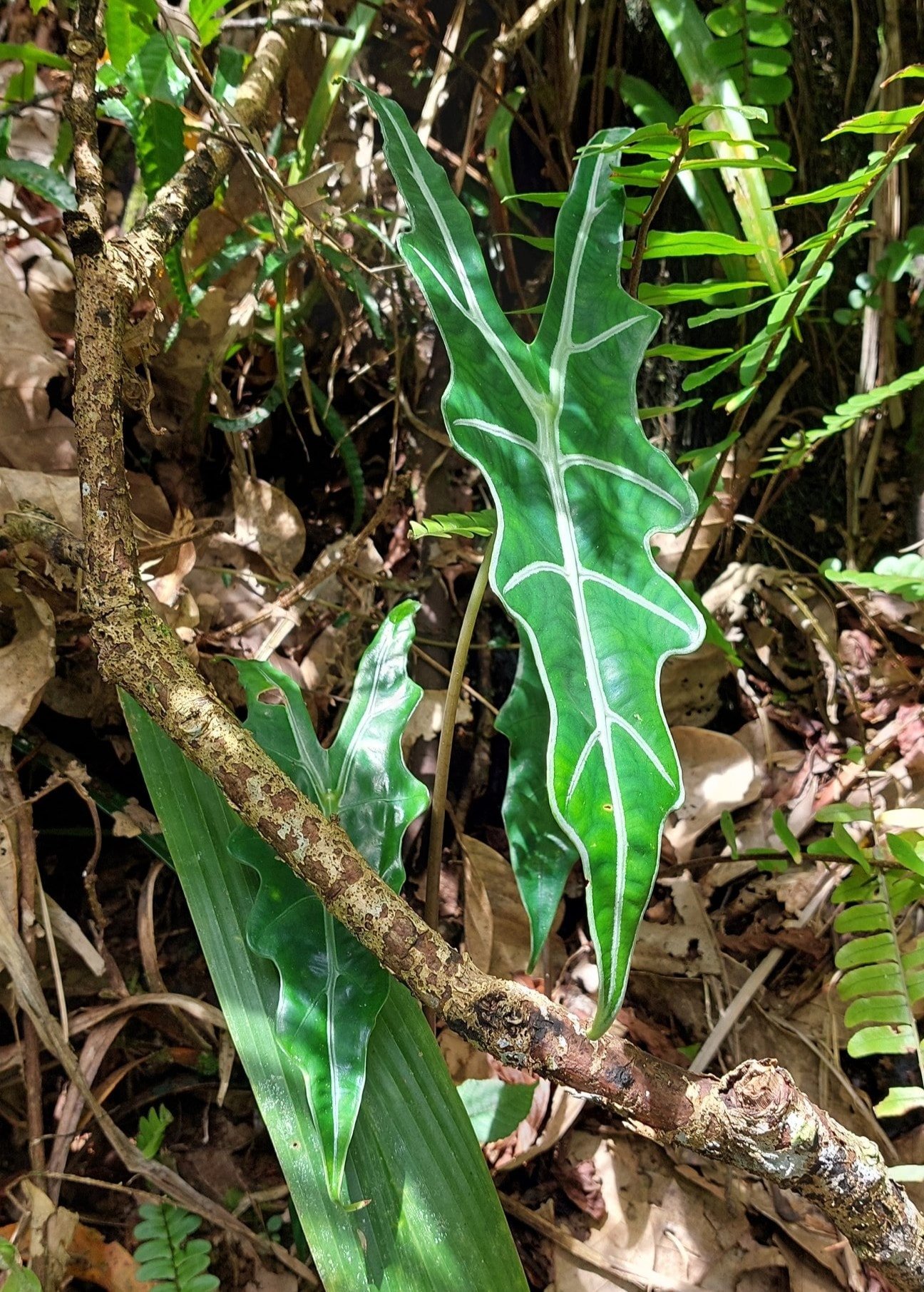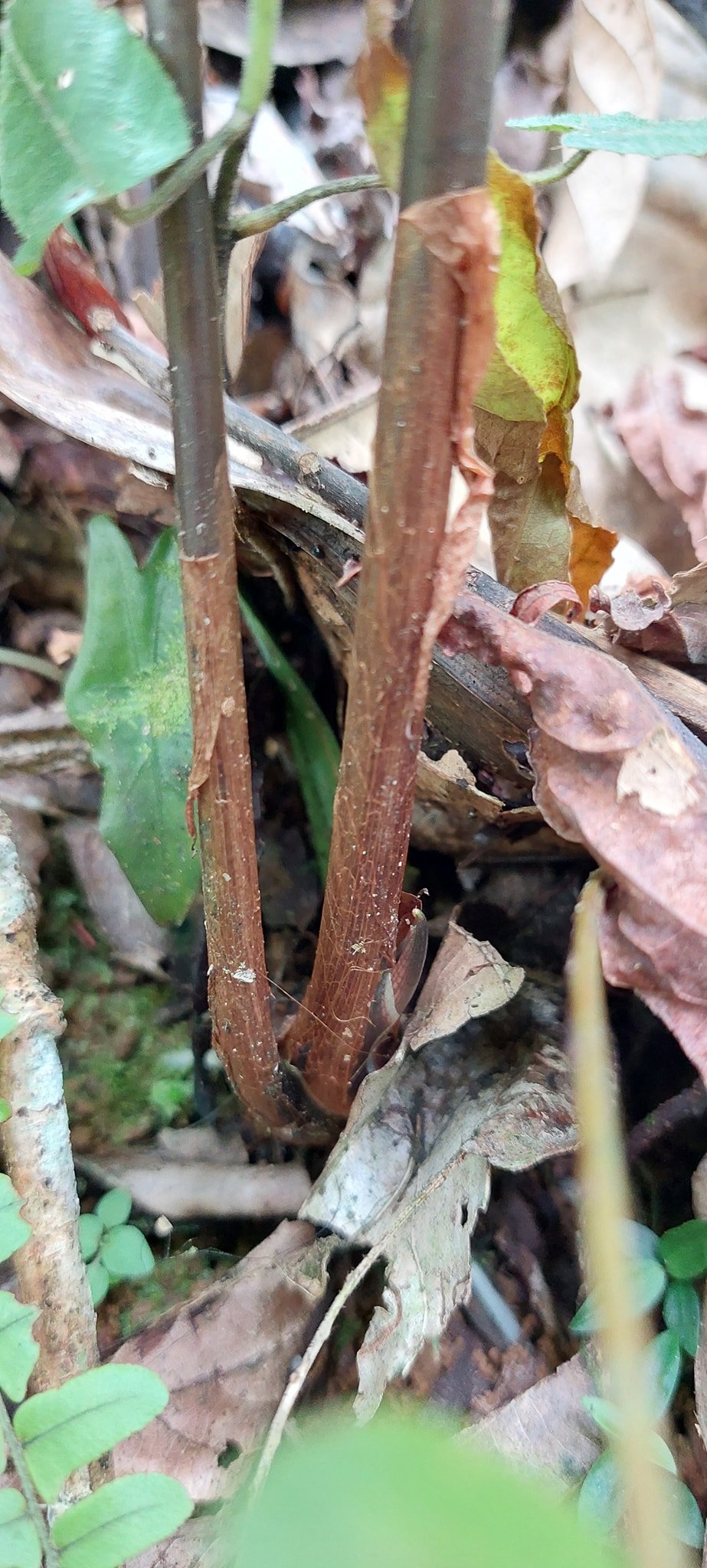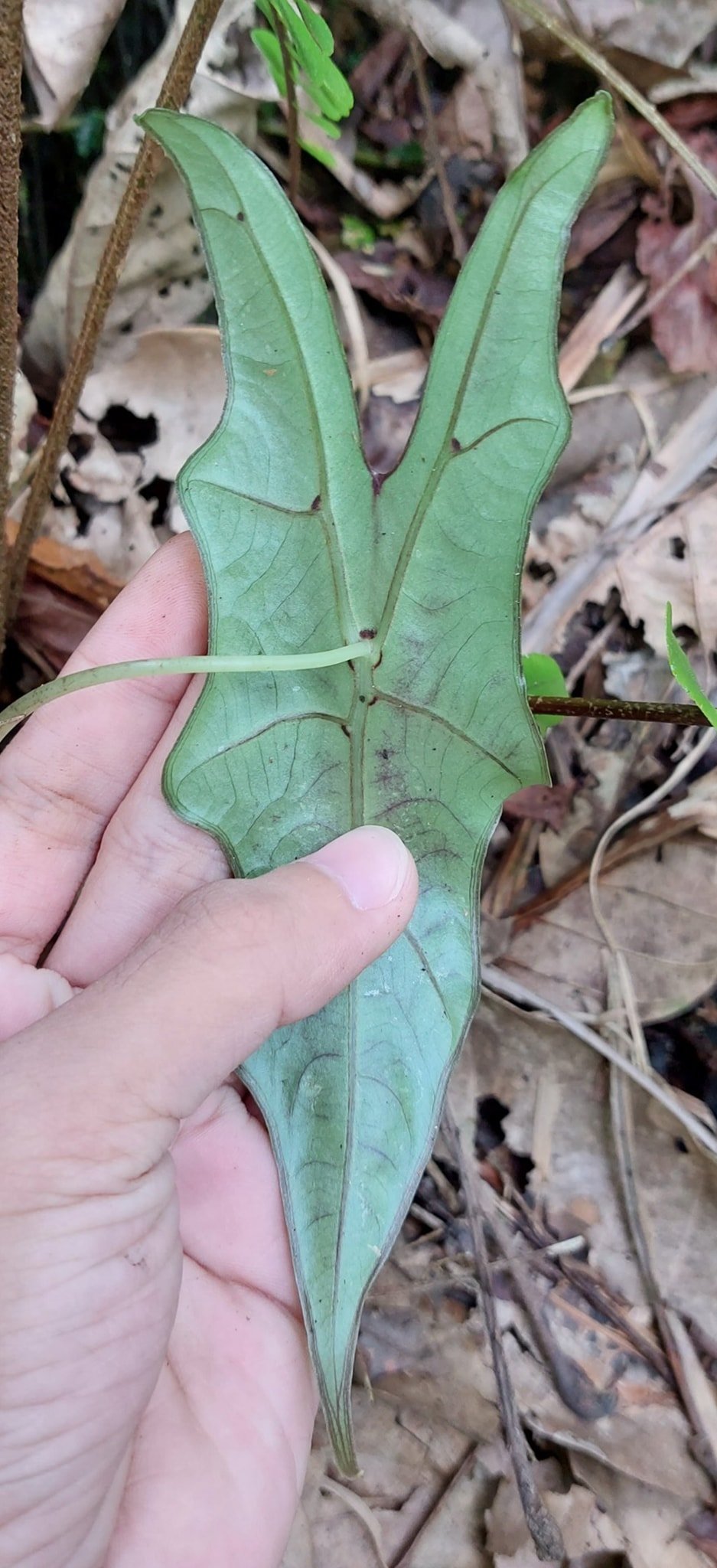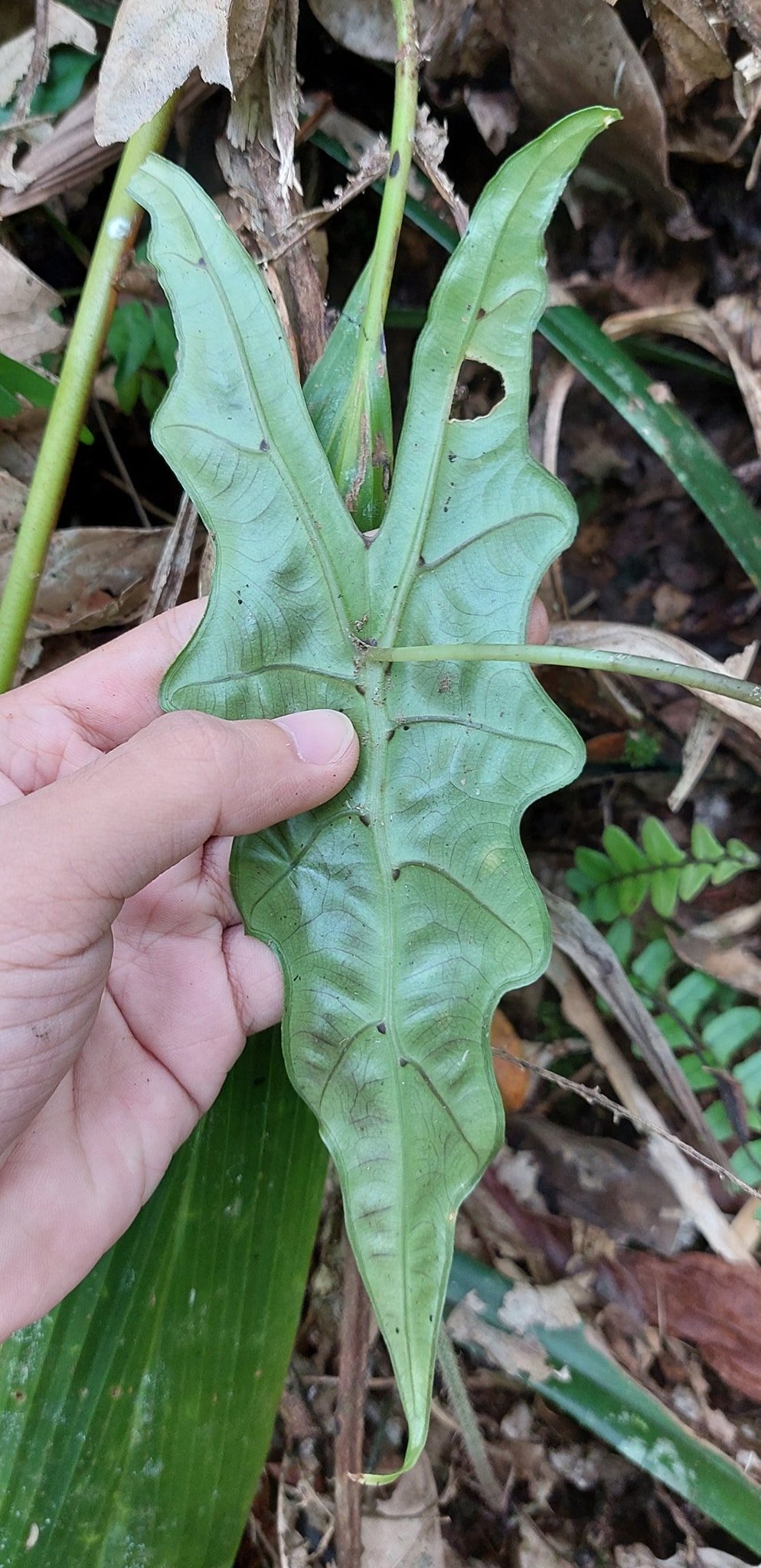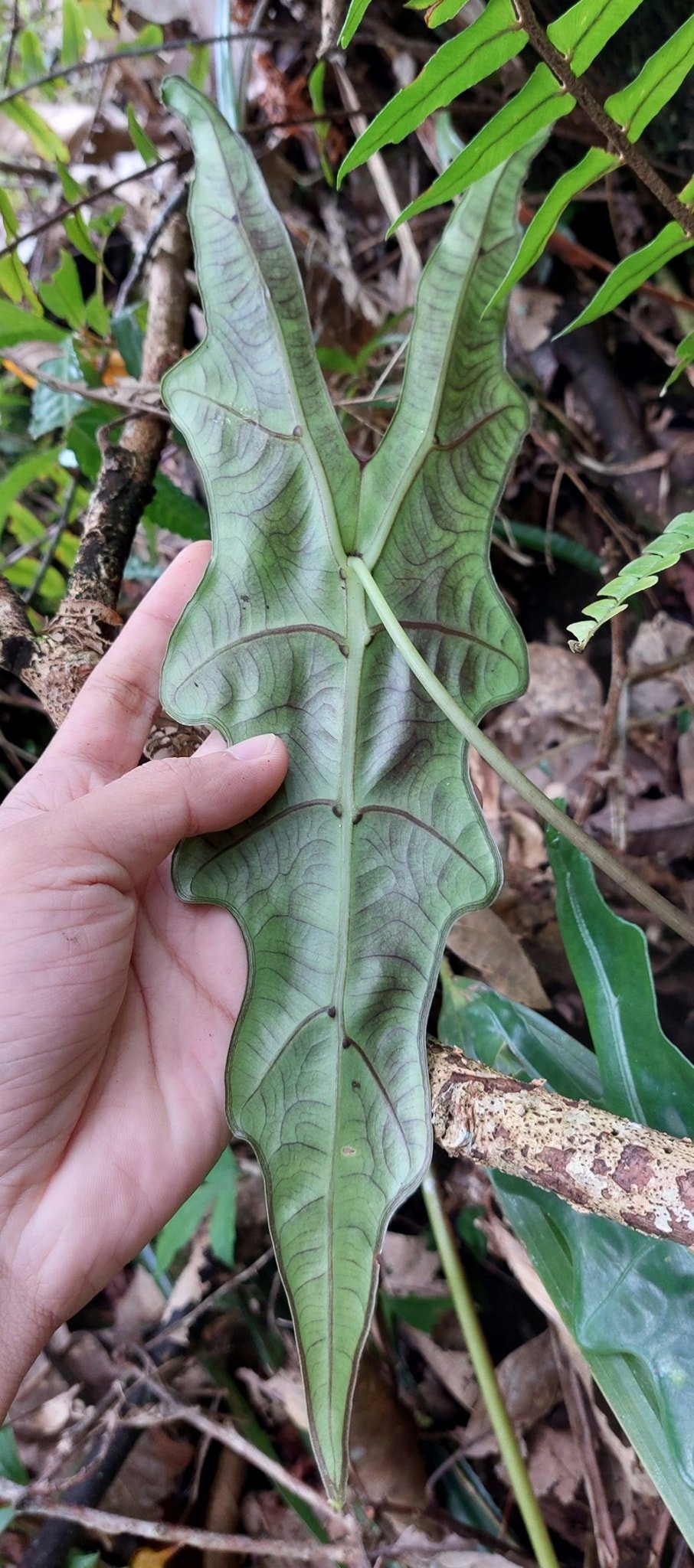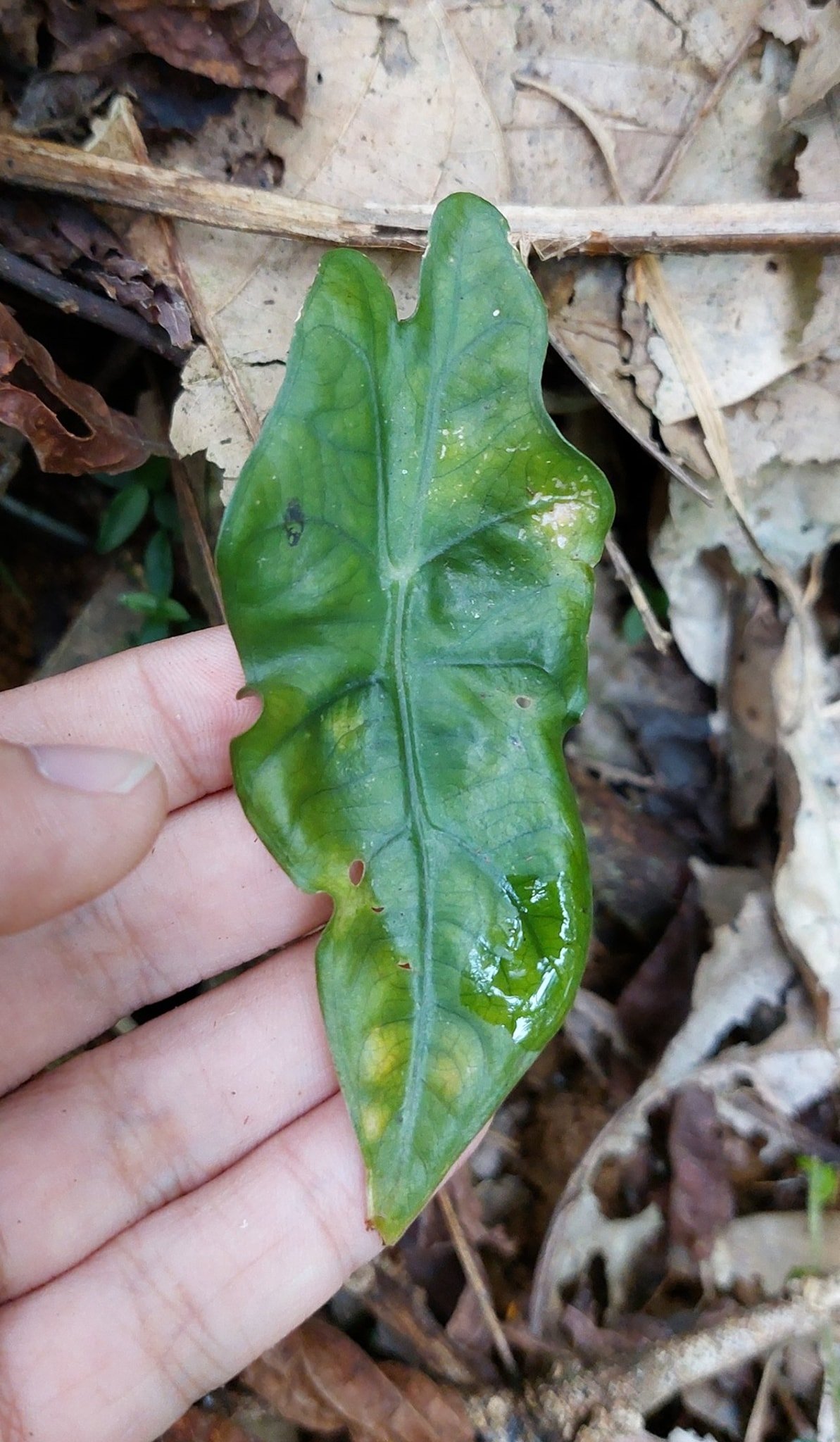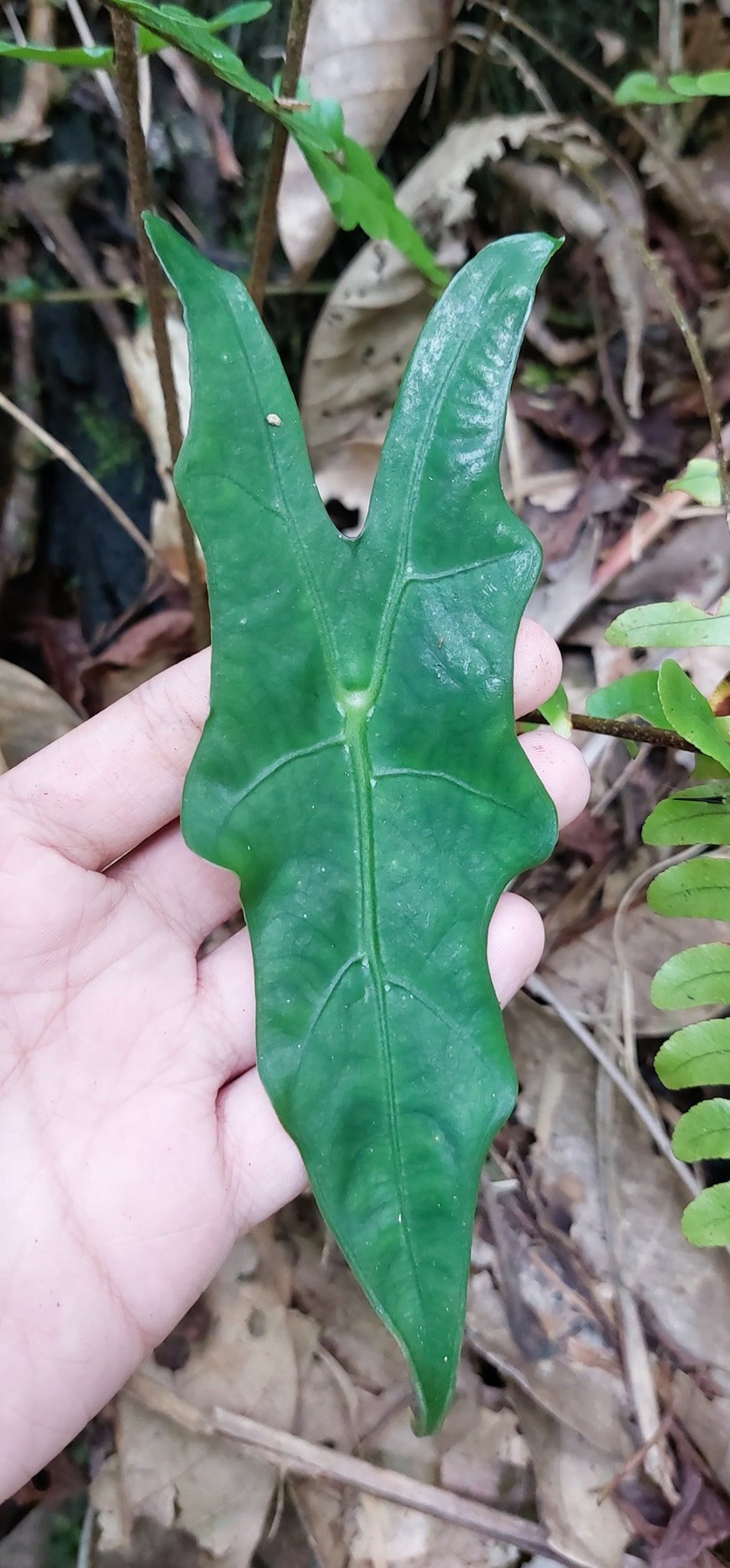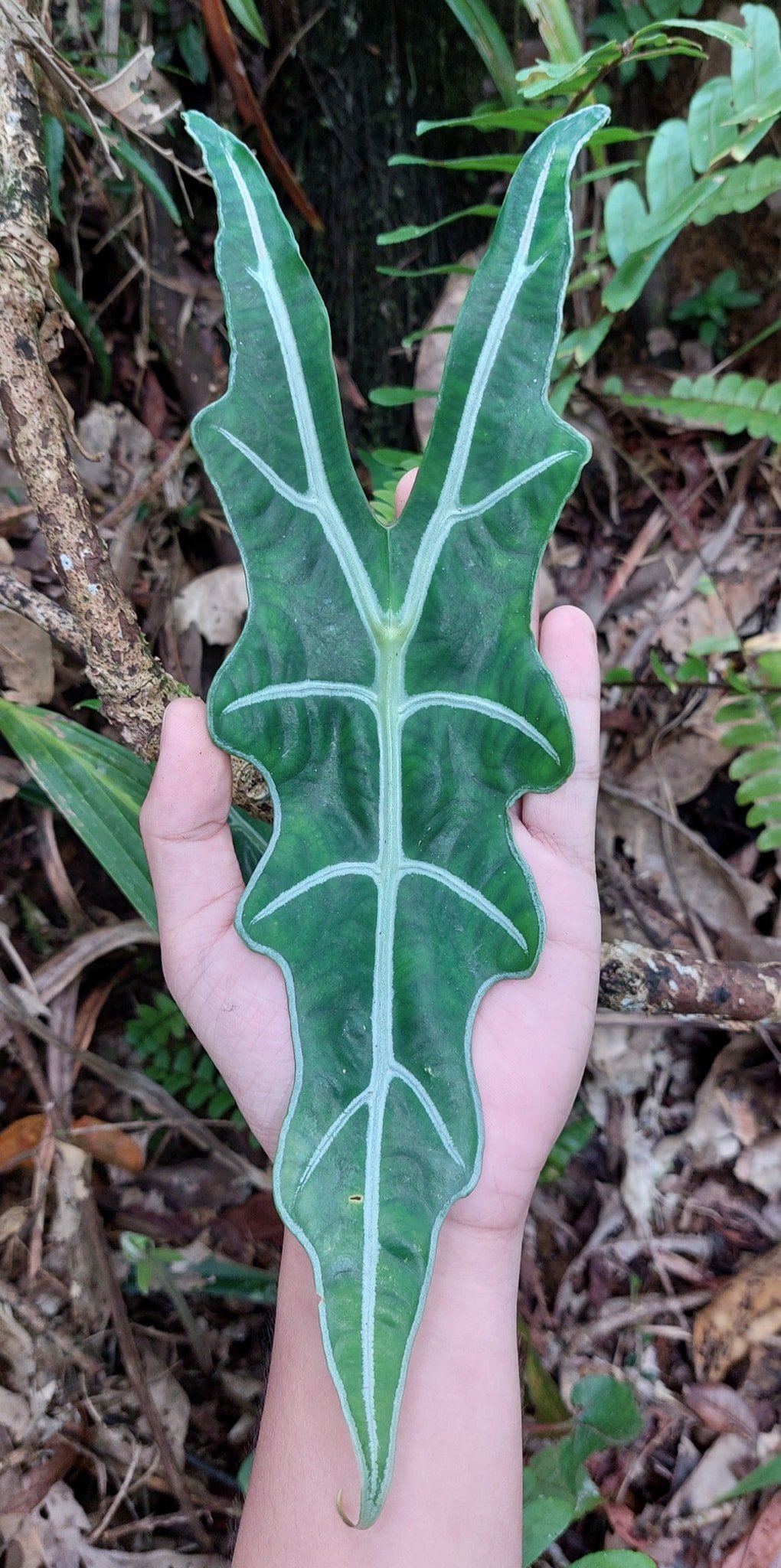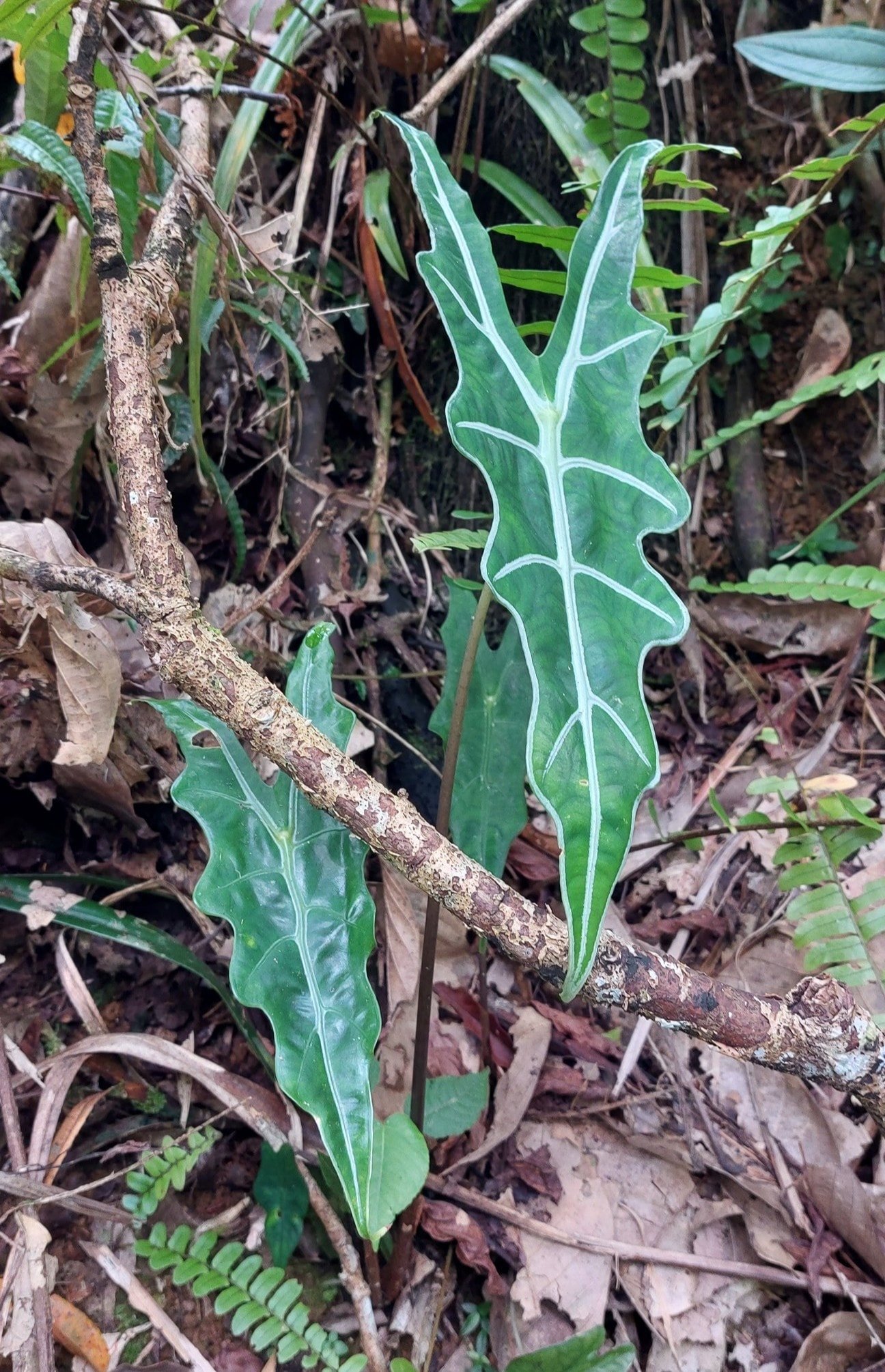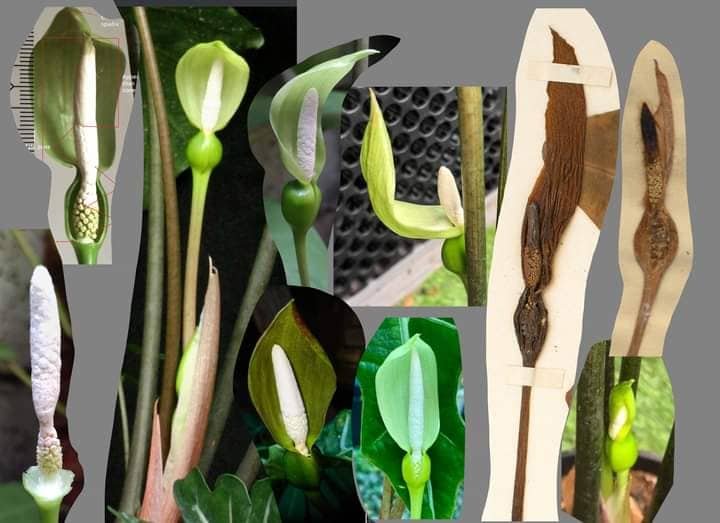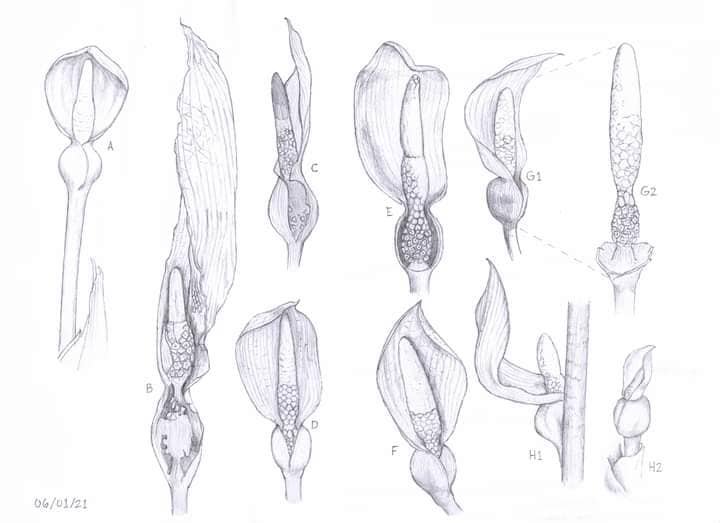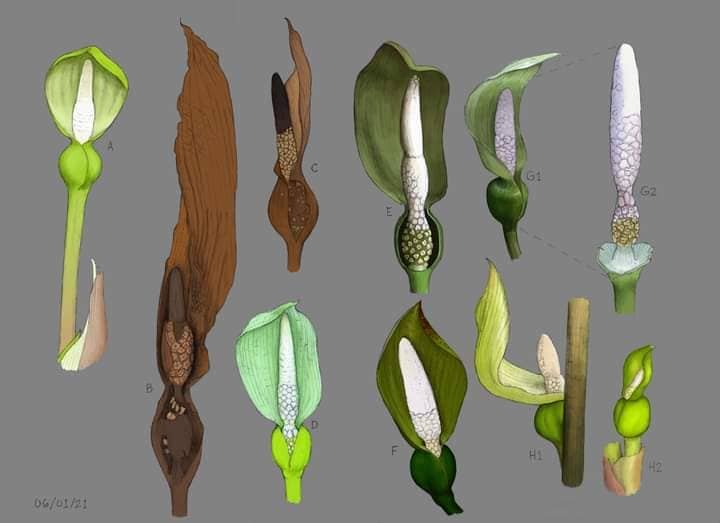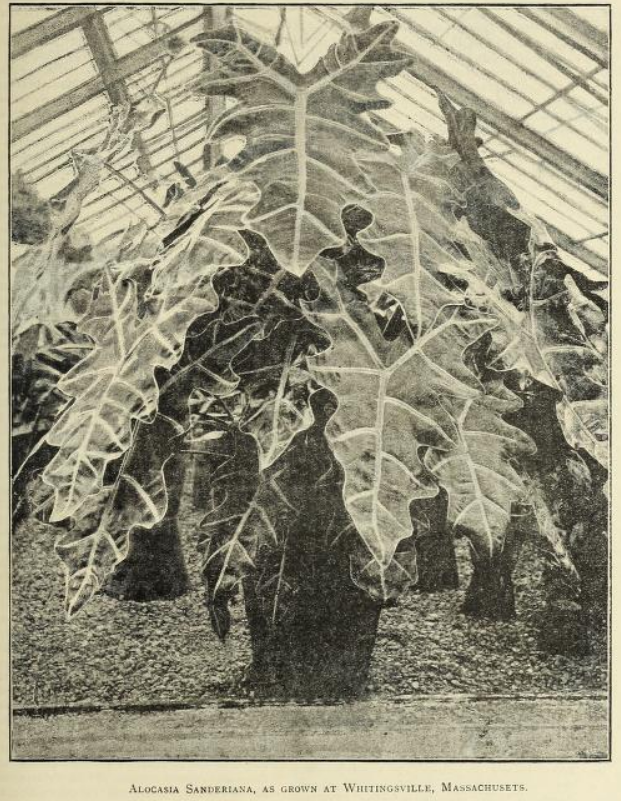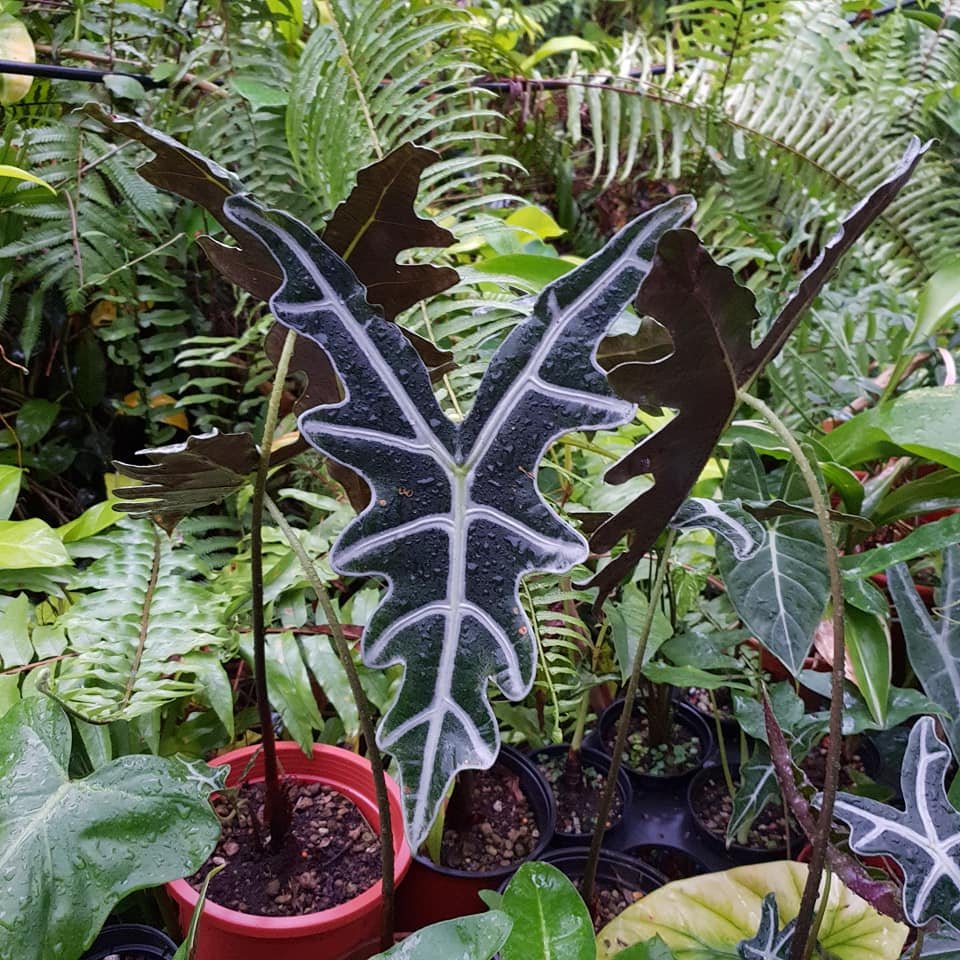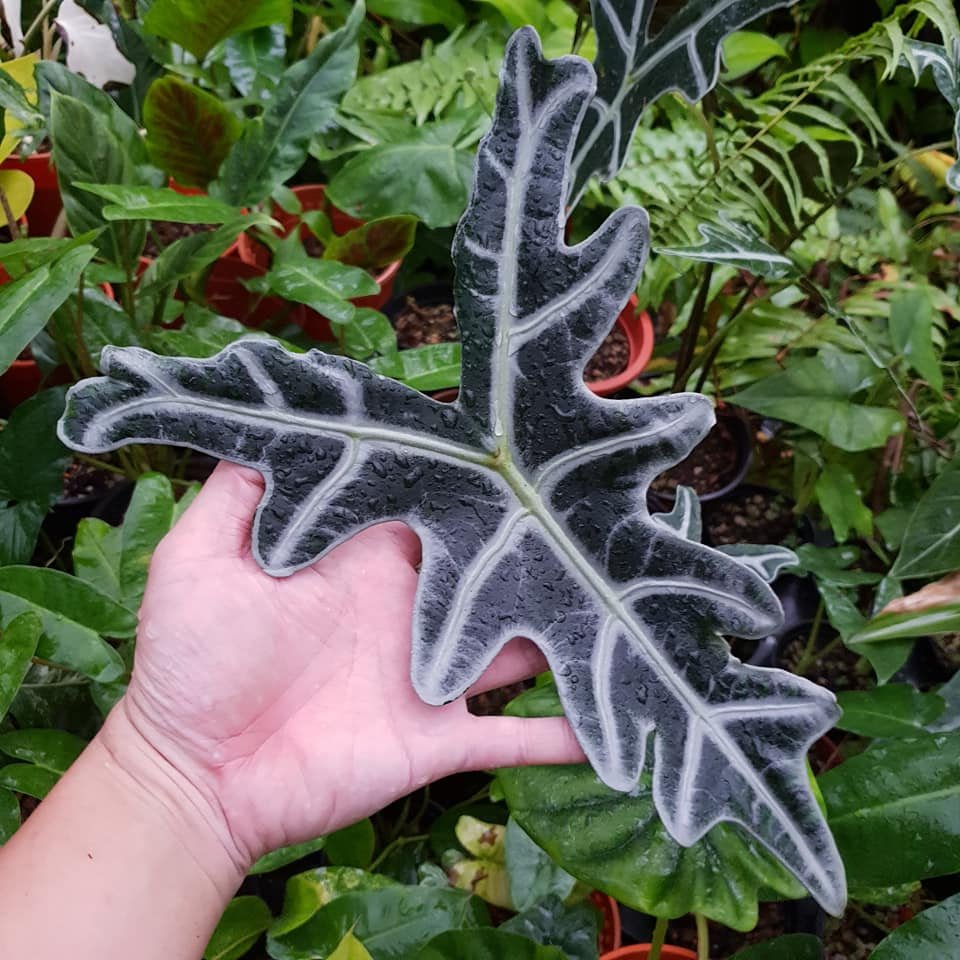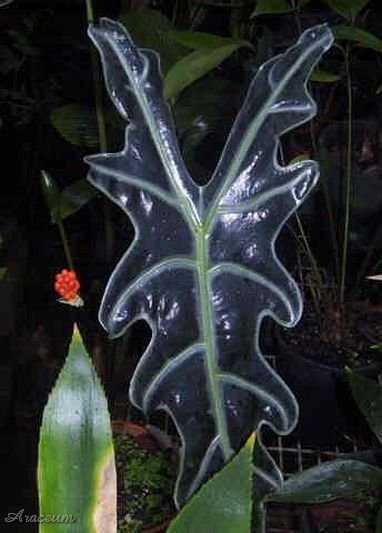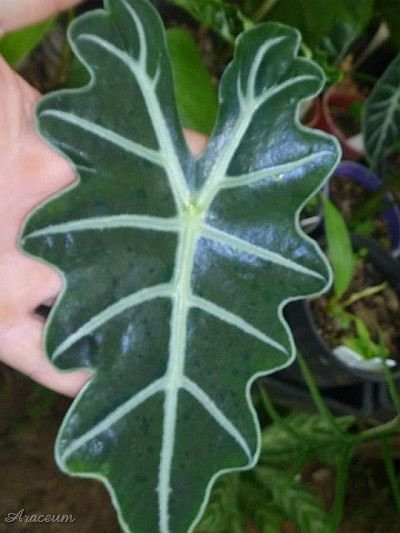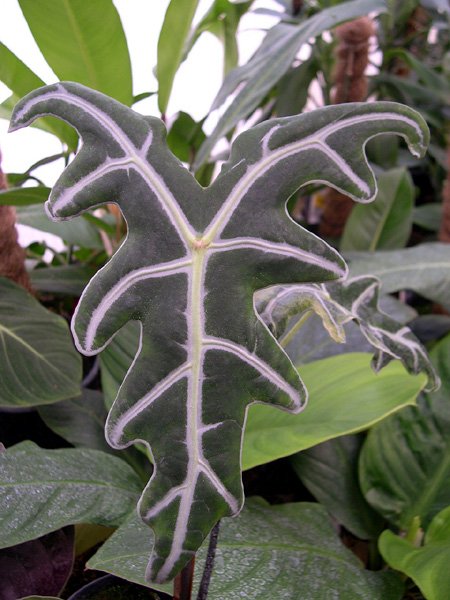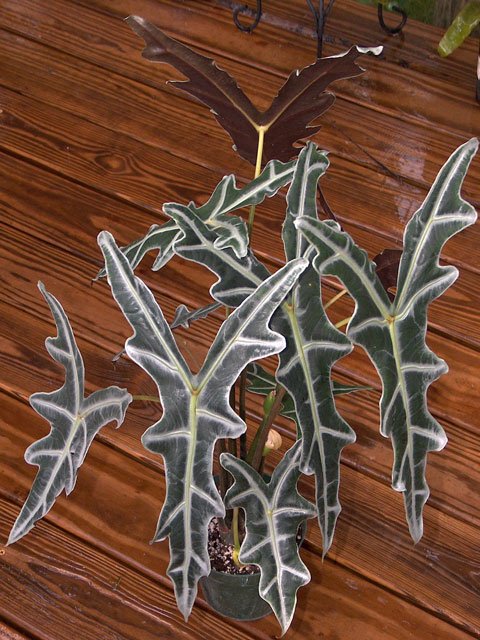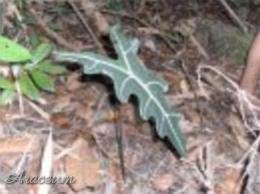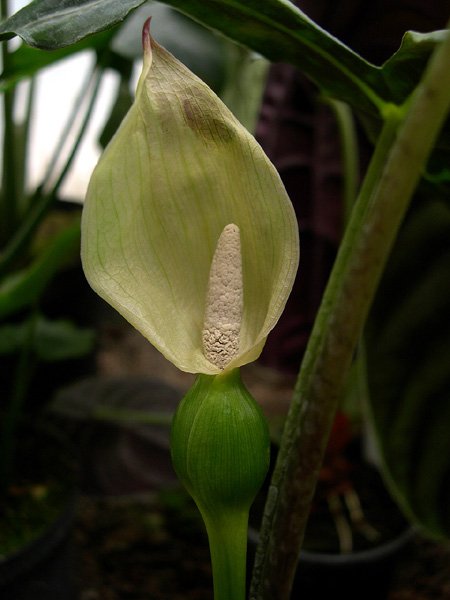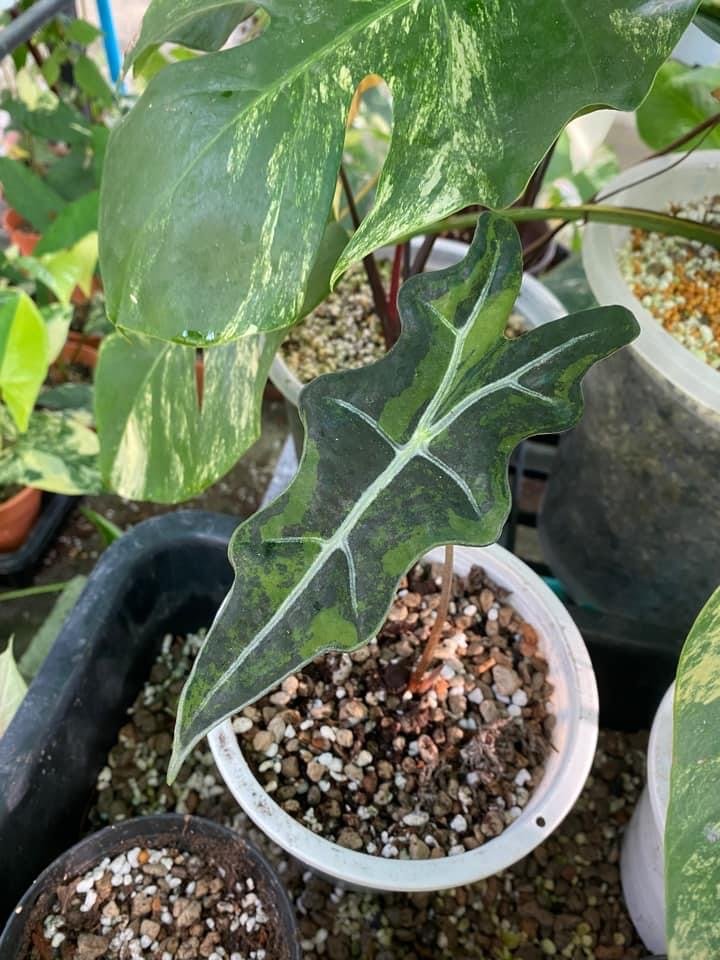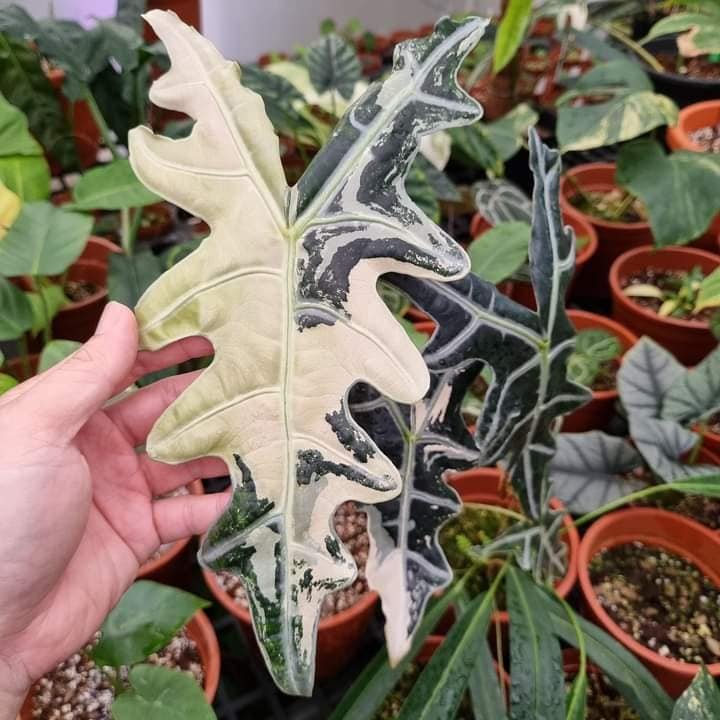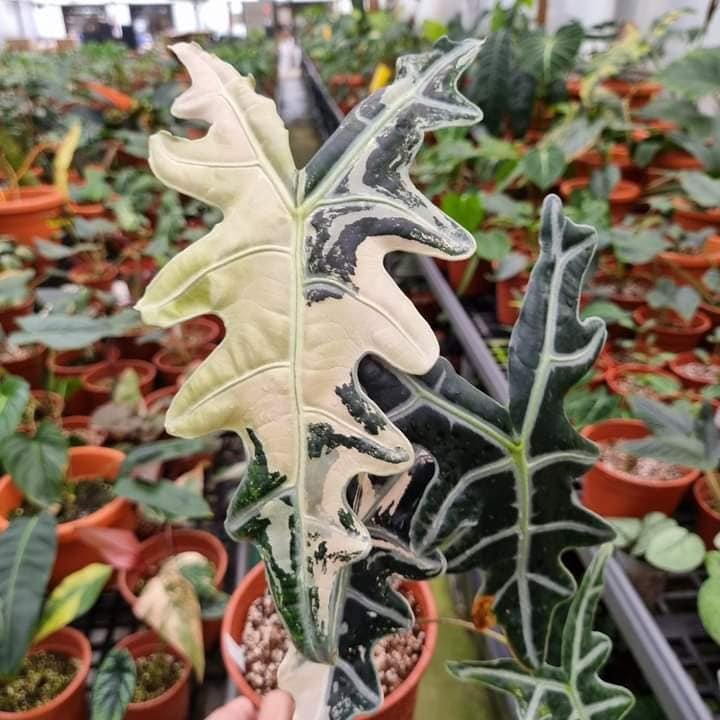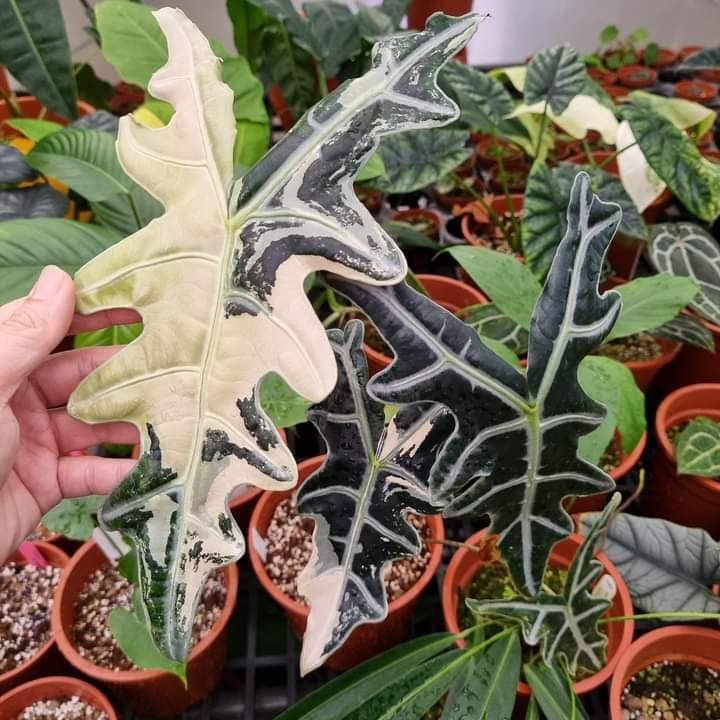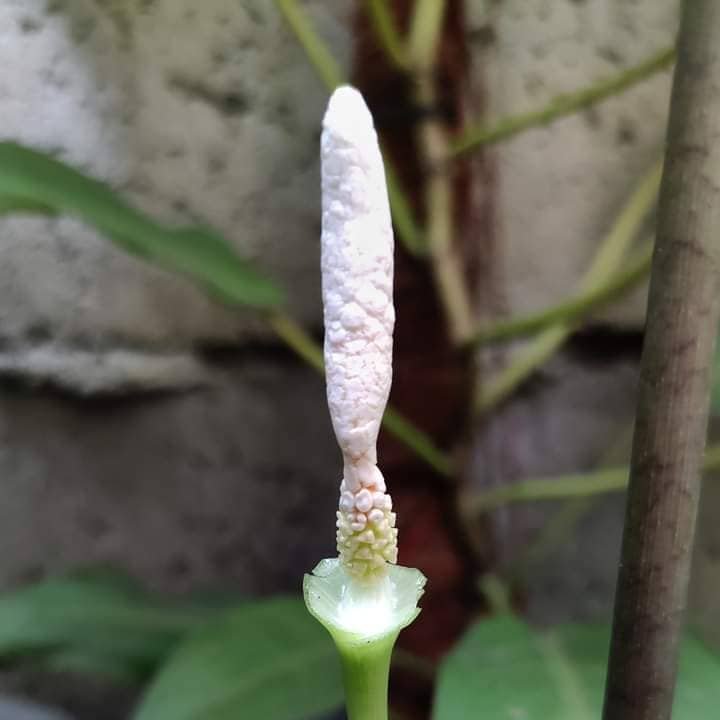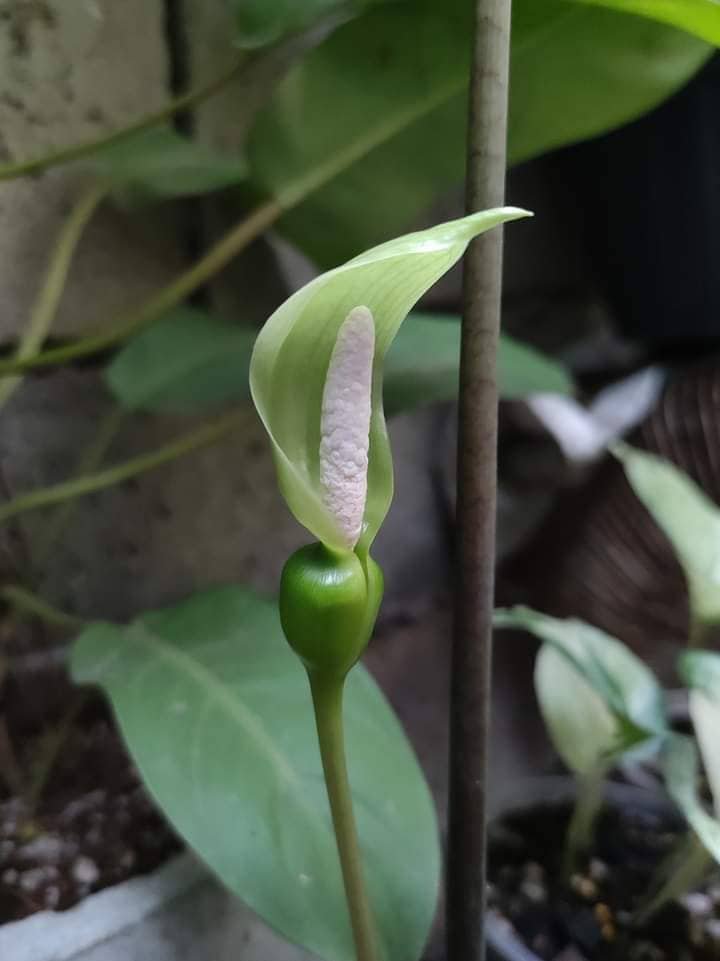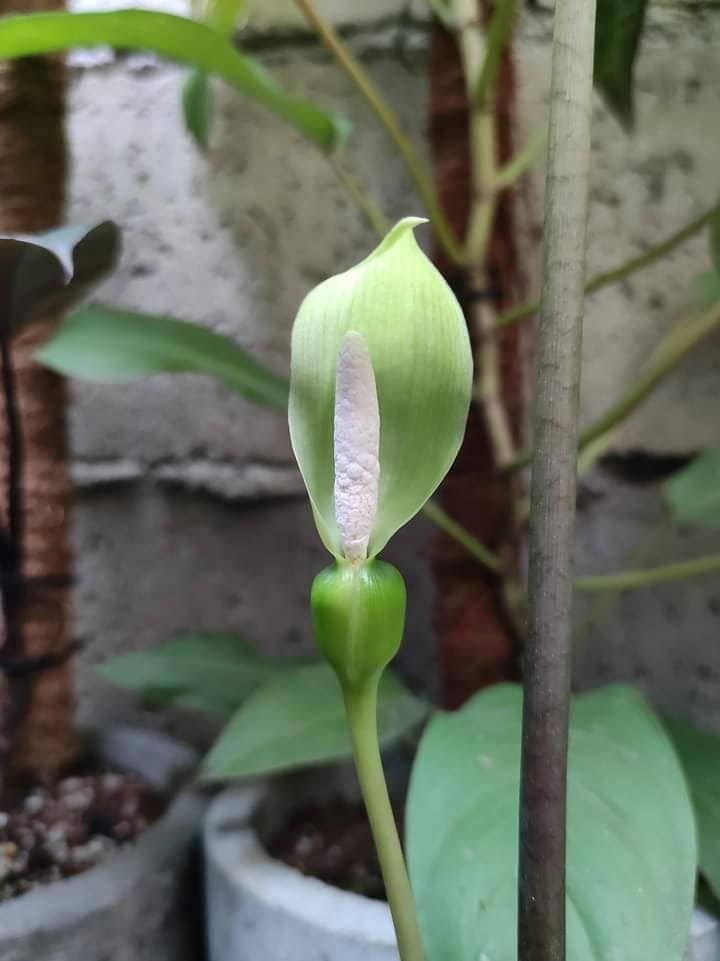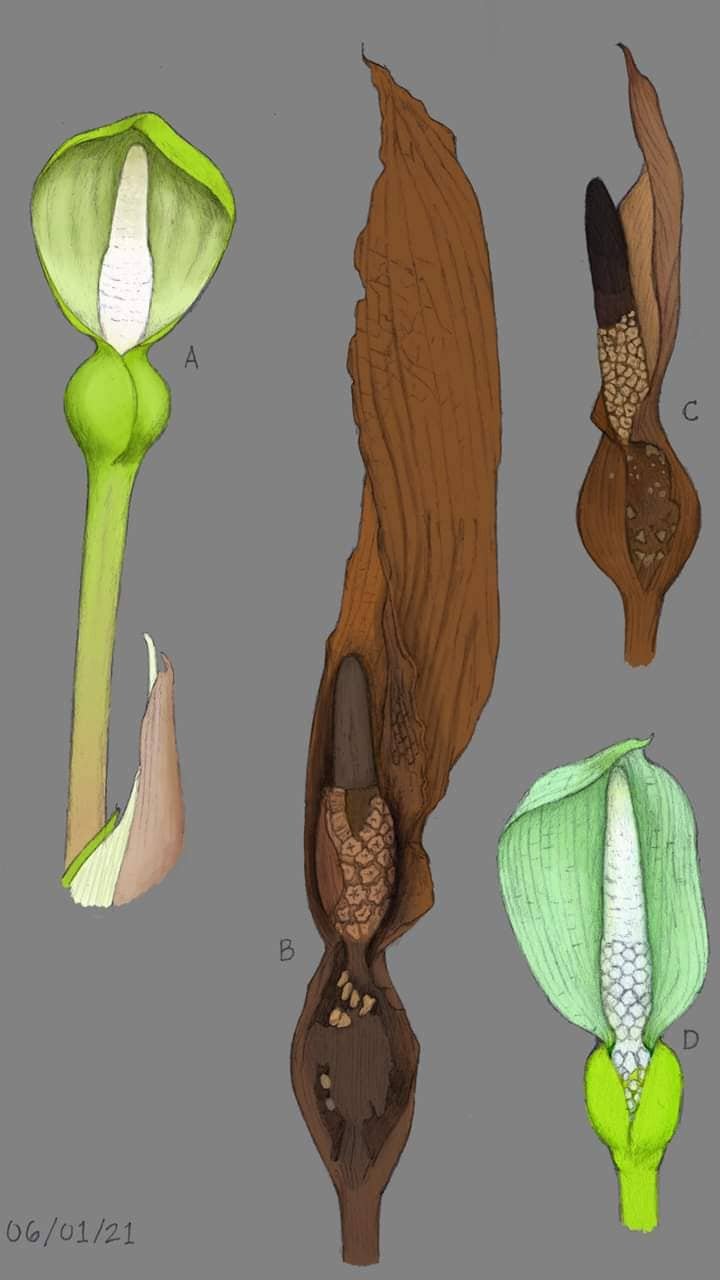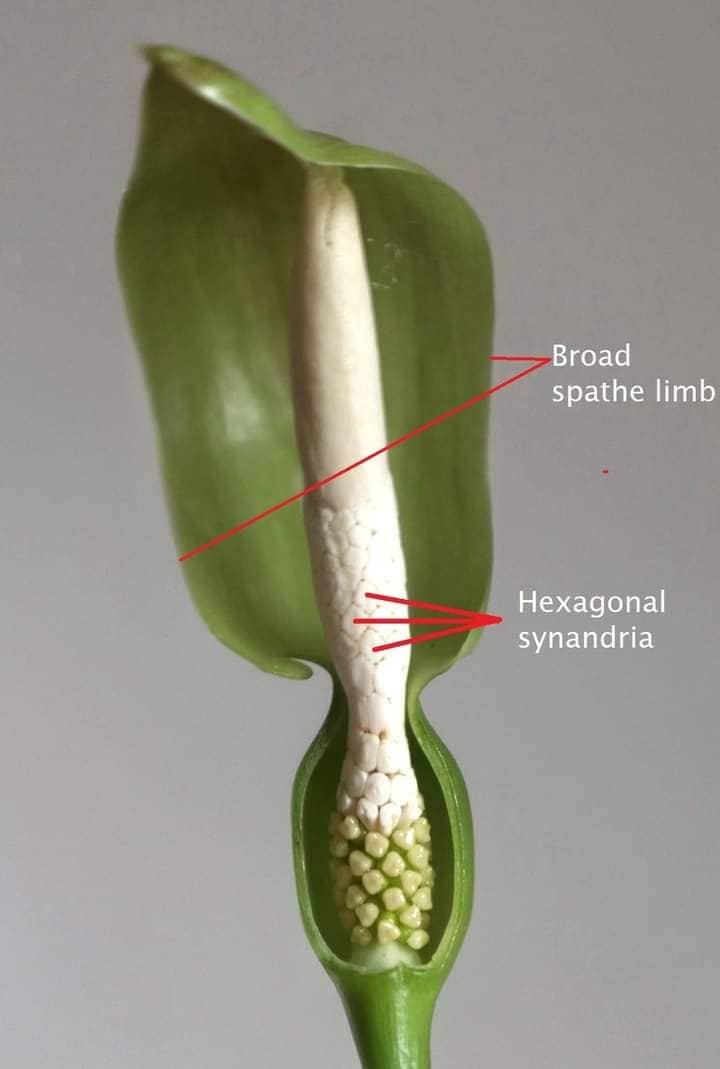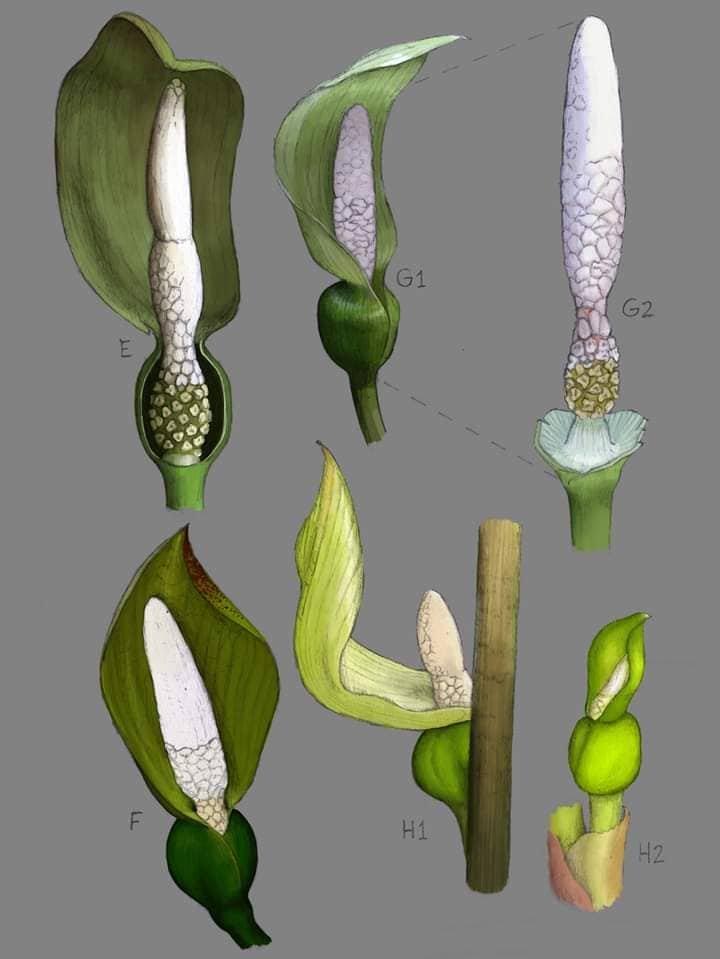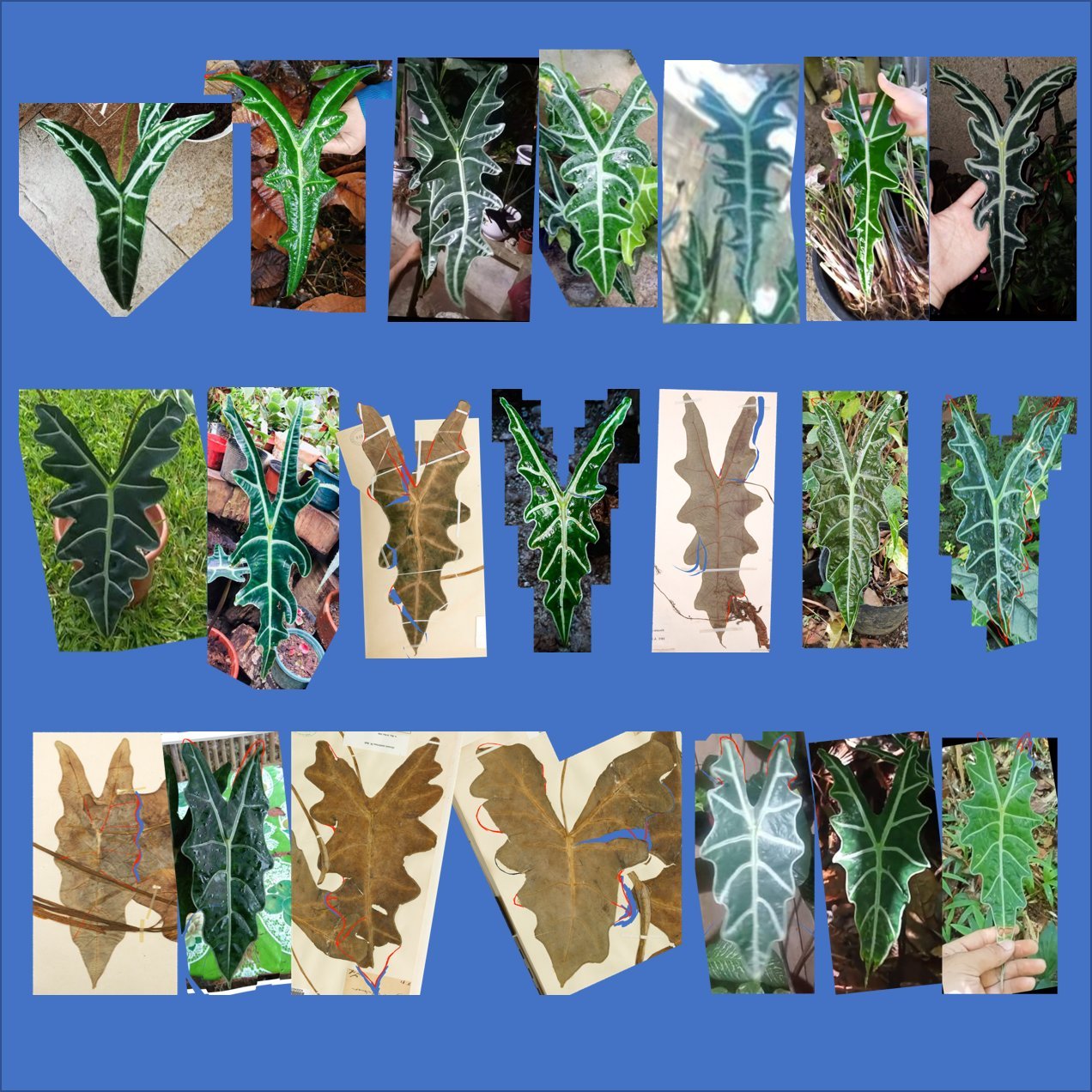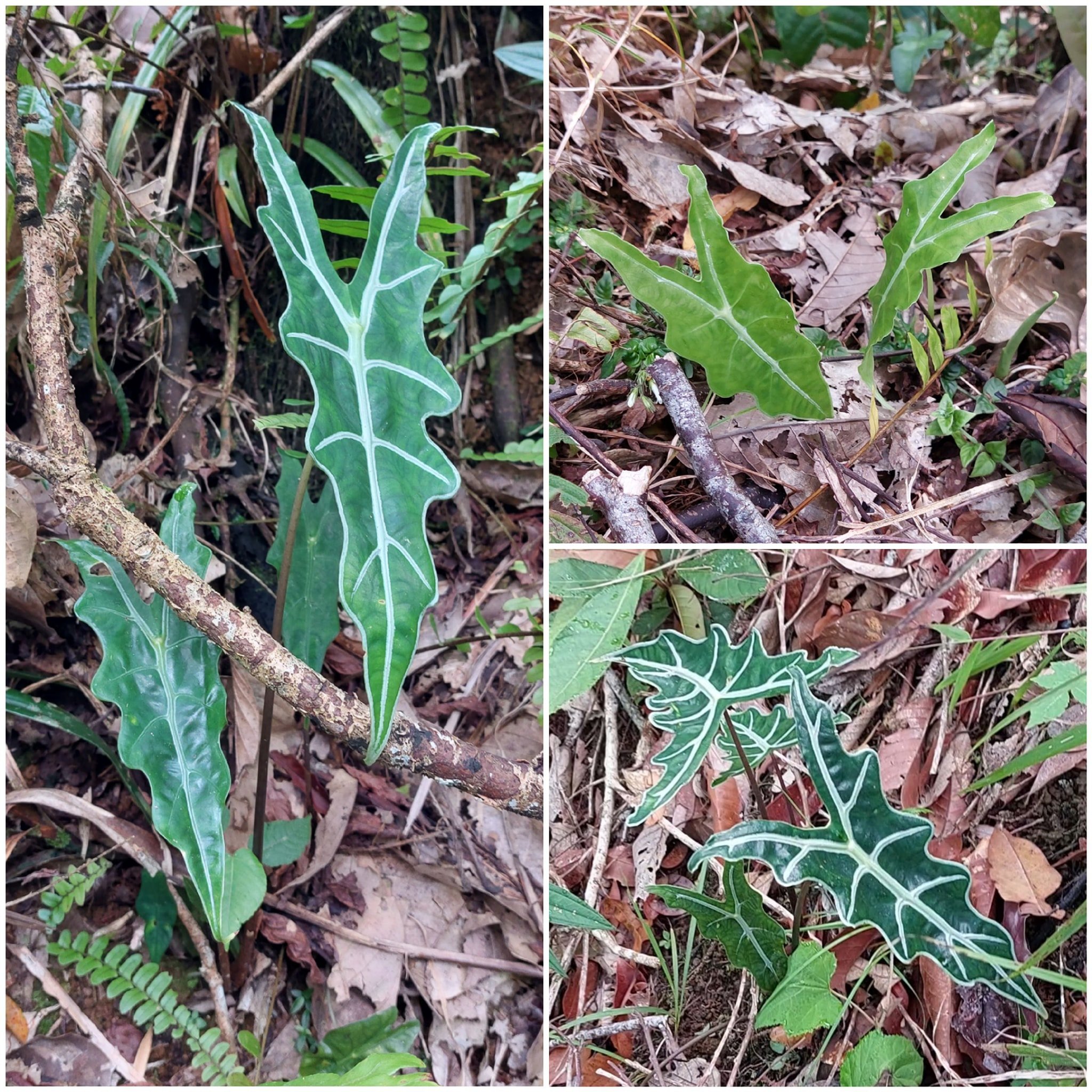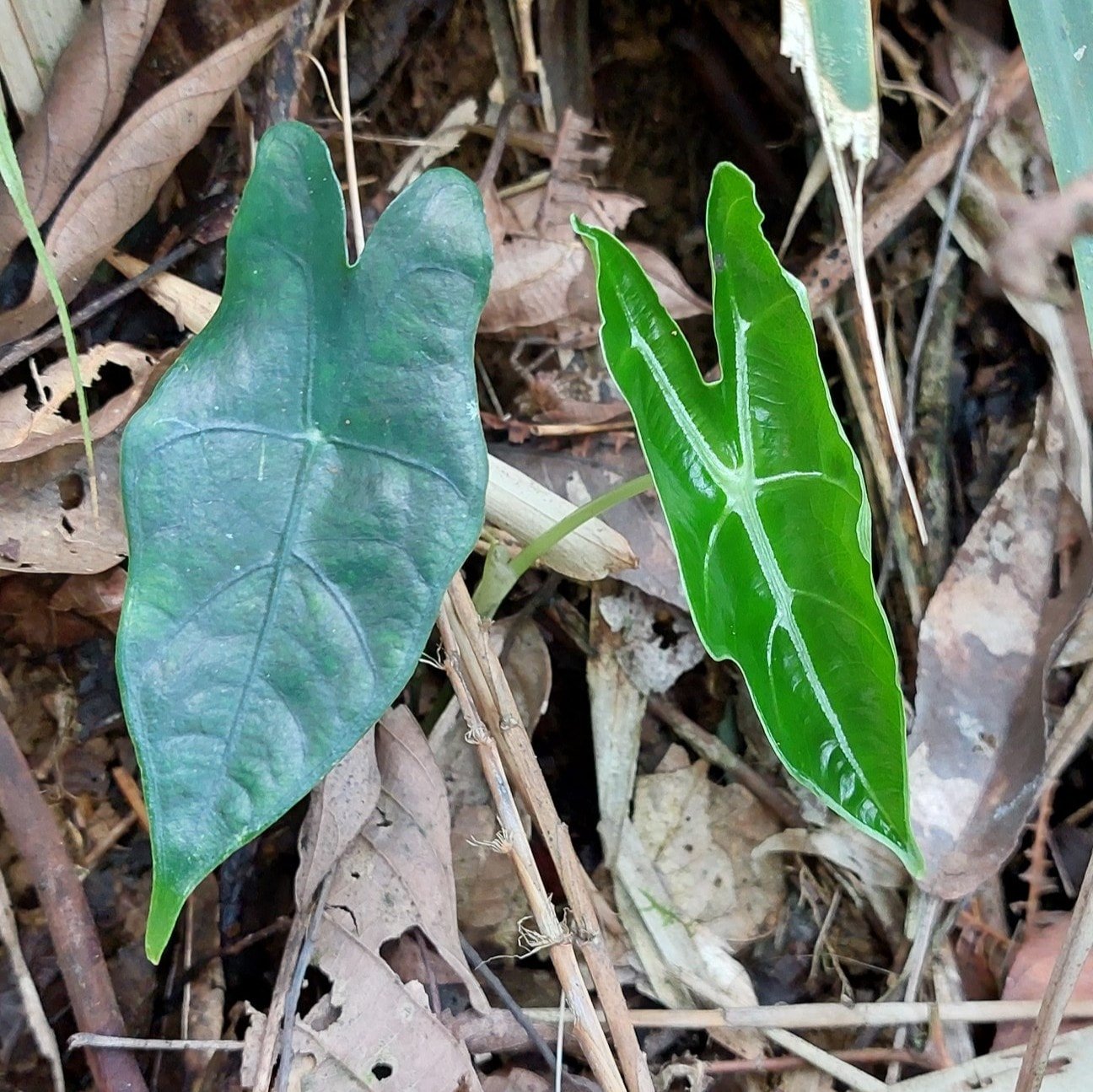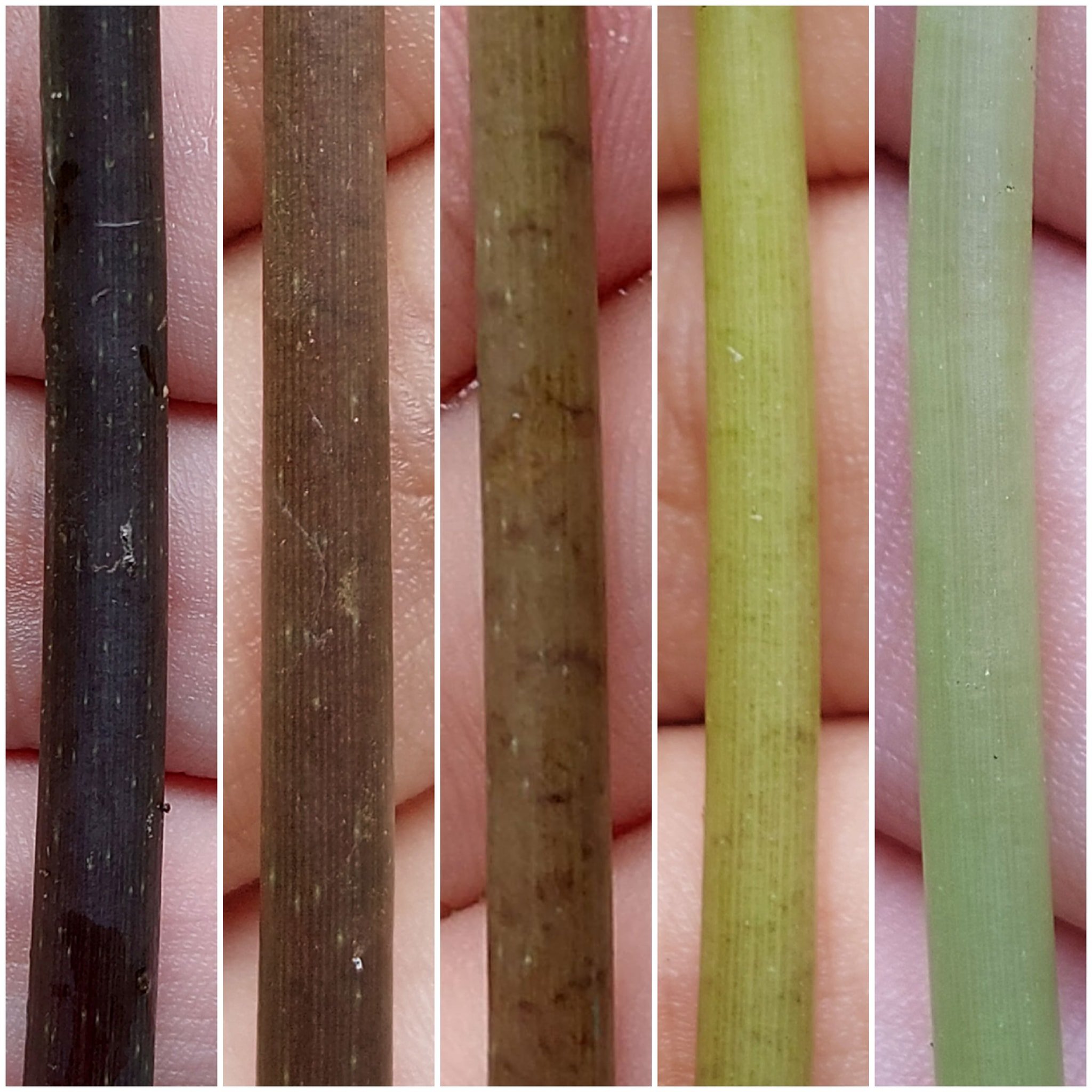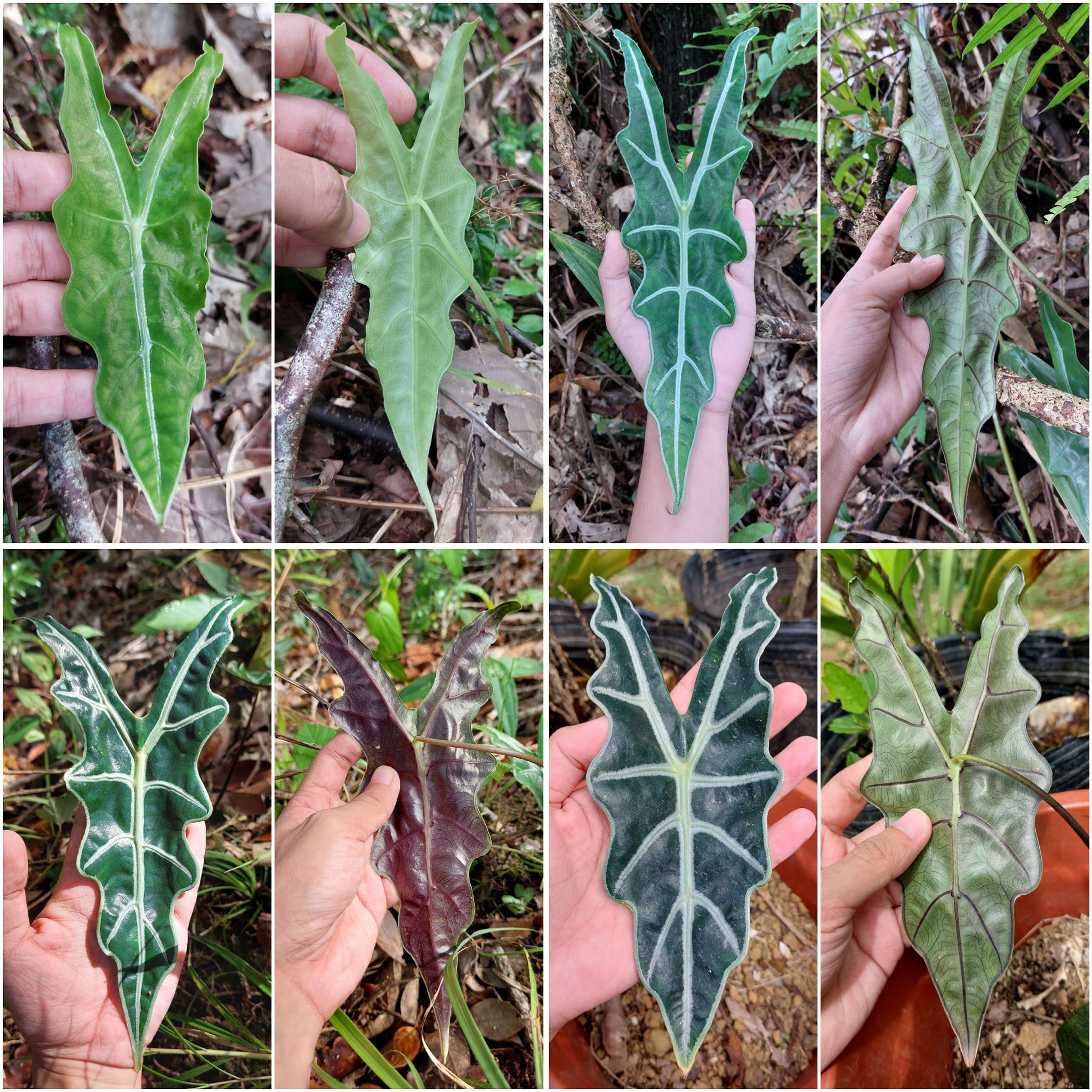ALOCASIA SANDERIANA
ORIGINAL DESCRIPTION:
The original selling price in 1884 was 2 guineas, which translates to ~ £179/$207 in today’s currency
SYNONYMS:
HOMOTYPIC SYNONYMS: Alocasia sanderi, Alocasia sanderiana var. nobilis, Alocasia urdanetensis
HETEROTYPIC SYNONYMS: Schizocasia sanderiana
ACCEPTED INFRASPECIFICS: N/A
DISTRIBUTION: Philippines, Mindanao
Alocasia sanderiana in situ leaf morphology shows high variability within the island of Mindanao (Map by Charlie Moonshade)
On the right edge of Mindanao, Alocasia sanderiana leaves start to resemble the hybrid Alocasia ‘Amazonica’ that is also in cultivation. However, these are wild specimens, found in situ.
One way to tell Alocasia ‘Amazonica’ apart from Alocasia sanderiana, is that the latter has fewer primary veins (3-4, rarely 5), while Alocasia ‘Amazonica’ has 5 or more. The extra white/silvery veinings on the lamina also gives away its identity as the hybrid, as that trait came from Alocasia longiloba. Looking at specimen N, its leaf margins are too shallowly lobed compared to the common Alocasia sanderiana. However, this preserved herbarium specimen was collected in the wild in 1910; 40+ years before Alocasia ‘Amazonica’.
CLIMATE: Tropical humid climate
Humidity is moderate throughout the year, ranging from 60% to 70%
Temperature is varies between the seasons - within the range of 48°F/9°C to 88°F/31°C during the day. Minimum temperatures never dip below 45°F/7°C
Rainy and humid season (October to May) and a dry season between June and October. The average annual rainfall is 1,200 mm
ECOLOGY: Old forest in damp ravines at low elevation.
SPECIES DESCRIPTION:
Moderately robust herb to 60 cm tall; stem decumbent to creeping, ca. 15 cm long, ca. 2 cm thick; leaves solitary to few together, interspersed with cataphylls (precise arrangement unclear from herbarium material); cataphylls papery, narrowly lanceolate; petiole to 60 cm long, sheathing in lower fifth to quarter; blade sagittate, deep glossy green adaxially, purple abaxially (?always), peltate for 25-30% of the length of the posterior lobes, to ca. 40 cm long x 20 cm wide; margin deeply undulate to sub-pinnatifid; anterior lobe to 24 cm long; anterior costa with 3-4 often but not always opposite primary lateral veins on each side diverging at ca. 80-100°, these somewhat acropetally deflected towards the tip of each segment; primary veins and costae white to yellowish; secondary veins emerging from the primary at a wide angle, thence deflected marginally, not or hardly forming interprimary collective veins;
Alocasia sanderiana specimes in nature exhibit a high degree of variability in leaf shape, abaxial coloration, and venation patterns (as shown above), as well as petiole coloration (as shown below)
Examples of Alocasia sanderiana in situ show the incredible diverse morphology of wild specimens compared to the TC version of this species that’s present in collections
INFLORESCENCE:
Inflorescence mostly paired; peduncle erect and slender, ca. 14-18 cm long; spathe greenish 6-10 cm long, lower part 1.5-2 cm long, ovoid; limb 4-8 cm long, more or less canoe-shaped; spadix greenish-white, somewhat shorter than to half the length of the spathe, stipitate for ca. 5 mm; female zone ca. 1 cm long; ovaries ca. 2 cm diam., subglobose; stigma sessile, rather sharply 3-4-lobed; sterile interstice corresponding to spathe constriction, ca. 5 mm long, tapering distally; male zone 1.2 cm long, ca. 4-5 mm thick (dry); synandria rhombo-hexagonal with the thecae ventrally but hardly laterally joined; synconnective centrally impressed, marginally slightly exceeding but not capping the thecae; appendix short, equalling the male zone, cylindric then abruptly tapering in distal 3-4 mm, slightly narrower than male zone (dry)
Alocasia sanderiana inflorescence illustrations by Charlie Moonshade
A. Philip K. Nelson (Jan 17, 2006); B. herbarium specimen (Feb 25, 1891); C. herbarium specimen (Aug 11, 1987); D. Vince Tatco (Apr 11, 2021); E. Edgar Alan Zeta-Yap (April 11, 2021); F. Melbert Baul (Jan 13, 2021); G. Brynne Mejares (Feb 10, 2021); H. Richard Lim (Apr 4, 2021)
VARIEGATED FORMS: GREEN, WHITE
Variegated Alocasia sanderiana in situ
ETYMOLOGY: The species is named in honour of orchidologist Henry Frederick Conrad Sander, a native of Bremen and founder of Messrs Sanders of St. Albans, a large nursery that was the centerpiece of orchid trade in Europe in the late 19th century.
NOTES:
Alocasia sanderiana var. nobilis is not an accepted cultivar, but this name, which first appeared in literature in 1893 (nearly a decade after the species was introduced), is prevalent on the market.
The peltate dark green, white veined leaves interspersed with cataphylls and the stipitate spadix and pointed-lobed stigmas indicate that this species is a segregate of the Alocasia longiloba complex, of which Alocasia boyceana appears to be another facies. Like Alocasia zebrina, this species was CITES listed, but has now been removed from CITES schedules. Alocasia sanderiana was at one time much in demand horticulturally. It has been used extensively in hybridization (see Burnett, 1984).
Other specimens seen: Cult. Kew, 4 Aug 1886, N.E. Brown s.n. (K); Surigao, Loher 2439 (K); cult. Manila, Loher 2440 (K, US); Lanao Prov., Pantar, Mearns 129 (US); Butuan sub prov., Agusan R., Merrill 7276 (US); Lanao Prov., Cawit, Zwickey 413 (GH).
CULTIVARS: Though not currently in circulation, historically this species had one cultivar, Alocasia sanderiana ‘Gandavensis’ (Ganda is the Latin name of the Belgian city of Ghent)
“Alocasia sanderiana var. gandavensis, featured in the present issue of L'Illustration, is of another origin. It was noticed among specimens of Alocasia sanderiana, imported by Mr. Louis De Smet-Duvivier, who gifted it to the the Marquis de Wavrin, amateur of Aroides in Ronsele (Belgium). He exhibited his plant at the monthly meeting of the Casino of Ghent on June 7th (1896). The plant got the highest award.
During the first stages of their development, the leaves have a purple sheen spread over the entire blade, and vermilion (red) along the veins. This coloring, a little darker on the lower part of the leaf, remains constant, while the upper page successively takes on less red hues to finally pass to a green color reflected in shiny pale green.
Emile Rodigas
HYBRIDS:
Alocasia ‘Alexandra Regina (Alocasia sanderiana x Alocasia sandersoni ‘Albescens’ (unknown))
Alocasia ‘Amazonica’ (Alocasia longiloba ‘Watsoniana’ x Alocasia sanderiana)
Alocasia ‘Chantrierii’ (Alocasia cuprea x Alocasia sanderiana)
Alocasia ‘Jean Merkel’ (Alocasia longiloba’ x Alocasia sanderiana)
Alocasia ‘Loco’ (Alocasia sanderiana x Alocasia longiloba ‘Watsoniana’)
Alocasia ‘Mandalay’ (Alocasia sanderiana x Alocasia longiloba ‘Watsoniana’)
Alocasia ‘Mark Campbell’ (Alocasia longiloba ‘Grandis’ x Alocasia sanderiana)
Alocasia ‘Mortefontanensis’ (Alocasia longiloba ‘Lowii’ x Alocasia sanderiana)
Alocasia ‘Polly’ (Alocasia sanderiana x Alocasia longiloba ‘Watsoniana’)
Alocasia ‘Purpley’ (Alocasia sanderiana x Alocasia longiloba ‘Watsoniana’)
Alocasia ‘Sanderidora’ (Alocasia odora x Alocasia sanderiana)
Alocasia ‘Splendida’ (Alocasia macrorrhizos x Alocasia sanderiana)
Alocasia ‘Venom’ (Alocasia sanderiana x Alocasia longiloba ‘Watsoniana’)
REFERENCES:
The American Florist: a weekly journal v.7 P.209 (1891-1892)
The journal of horticulture, cottage gardener and home farmer ser. 3, v. 26 (1893)
Brynne Mejares (Inflorescence Photos)
Co’s Digital Flora (Variegated specimen in situ)
Charlie Moonshade (Inflorescence illustrations, leaf mapping, in situ examples)


